What is MICE Tourism?
Benefits, challenges and examples | 2024.
Are you ready to hear about the exciting world of MICE? it's all about bringing people together to network, learn, and have a great time! And the best part? You get to travel to all kinds of cool destinations around the world, from sunny beaches to bustling cities. So pack your bags, grab your business cards, and get ready to MICE it up!

What is MICE Tourism ?
- Corporate meetings: Events that bring together employees, clients, or partners to share information, collaborate, and strengthen relationships.
- Incentive travel: Reward trips offered to employees or clients for their high performance or specific achievements.
- Conventions: Large-scale gatherings of professionals from a specific industry or association to share knowledge, network, and develop new ideas.
- Exhibitions: Events that showcase products, services, and technologies to a target audience of potential buyers, distributors, and industry professionals.
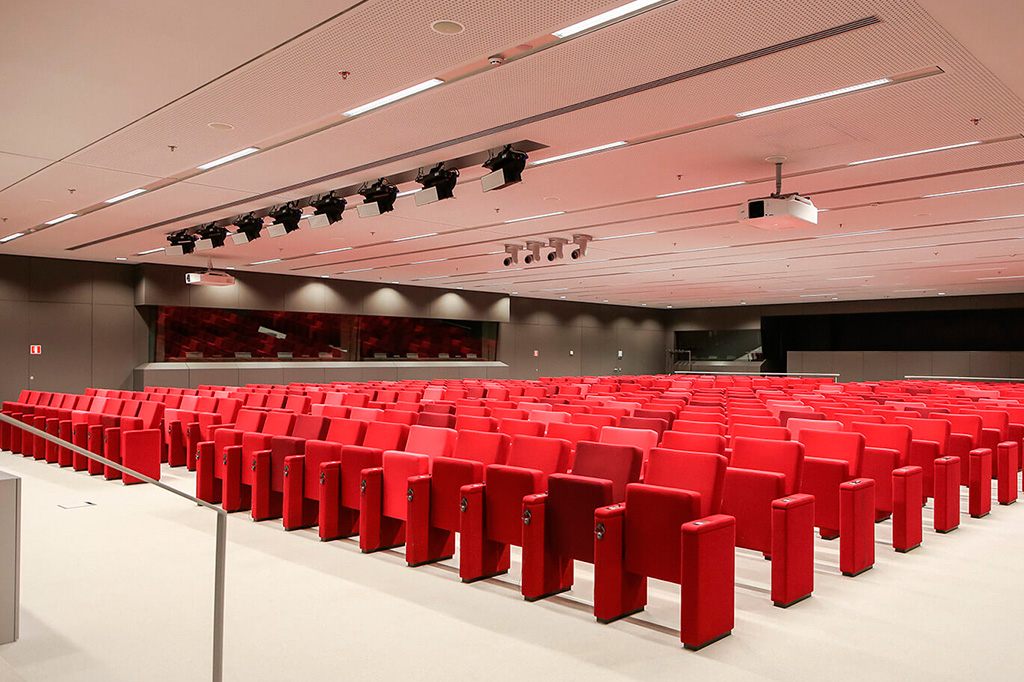
The Different Types of MICE Tourism
Conferences, exhibitions.
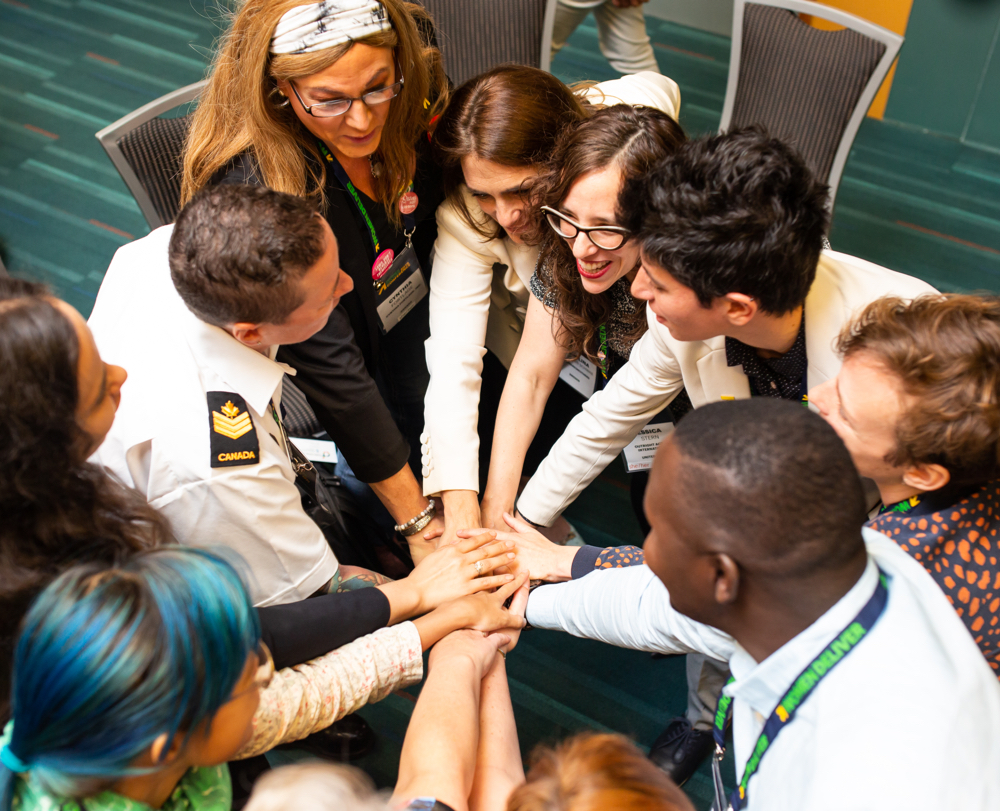
The Benefits of MICE Tourism
MICE tourism offers a wide range of benefits for various stakeholders, including cities, businesses, and individuals. Here is a closer look at the key benefits:
For cities:
- Economic impact: MICE tourism generates significant revenue through direct and indirect spending, contributing to local economic growth and prosperity.
- Job creation: The MICE industry creates jobs in various sectors, including hospitality, transportation, event planning, and construction, leading to increased employment opportunities.
- Destination promotion: MICE events showcase cities to a global audience, promoting their attractions, infrastructure, and hospitality offerings, and attracting visitors and investment.
- Infrastructure development: Hosting MICE events can incentivize cities to invest in infrastructure development, such as improved transportation networks, convention centers, and hotels, benefiting both residents and visitors.
- Social and cultural benefits: MICE events can foster cultural exchange, promote social cohesion, and enhance the city’s image and reputation.
For businesses:
- Brand awareness and reputation: MICE events provide a platform to showcase brands, products, and services to a targeted audience, increasing brand awareness and enhancing reputation.
- Lead generation and sales: MICE events offer valuable opportunities to generate leads, connect with potential clients, and boost sales.
- Customer relationship management: MICE events provide a platform to strengthen relationships with existing customers, build loyalty, and enhance customer satisfaction.
- Employee motivation and retention: Incentive travel programs and corporate events can motivate employees, improve morale, and increase employee retention.
- Knowledge sharing and networking: MICE events facilitate knowledge sharing, collaboration, and networking among industry professionals, leading to innovation and business growth.
For individuals:
- Professional development: MICE events offer opportunities for professional development, learning, and skill enhancement through workshops, conferences, and seminars.
- Networking and career opportunities: MICE events provide valuable networking opportunities, allowing individuals to connect with peers, mentors, and potential employers, leading to career advancement.
- Personal enrichment and cultural experiences: MICE events offer unique experiences, cultural immersion, and opportunities to explore new destinations, broadening horizons and enriching personal lives.
- Memorable experiences: MICE events provide participants with memorable experiences, fostering positive memories and promoting a sense of community and belonging.
Overall, MICE tourism plays a vital role in promoting economic growth, job creation, destination promotion, and knowledge sharing. It offers a multitude of benefits for cities, businesses, and individuals, contributing to a vibrant and sustainable tourism industry.
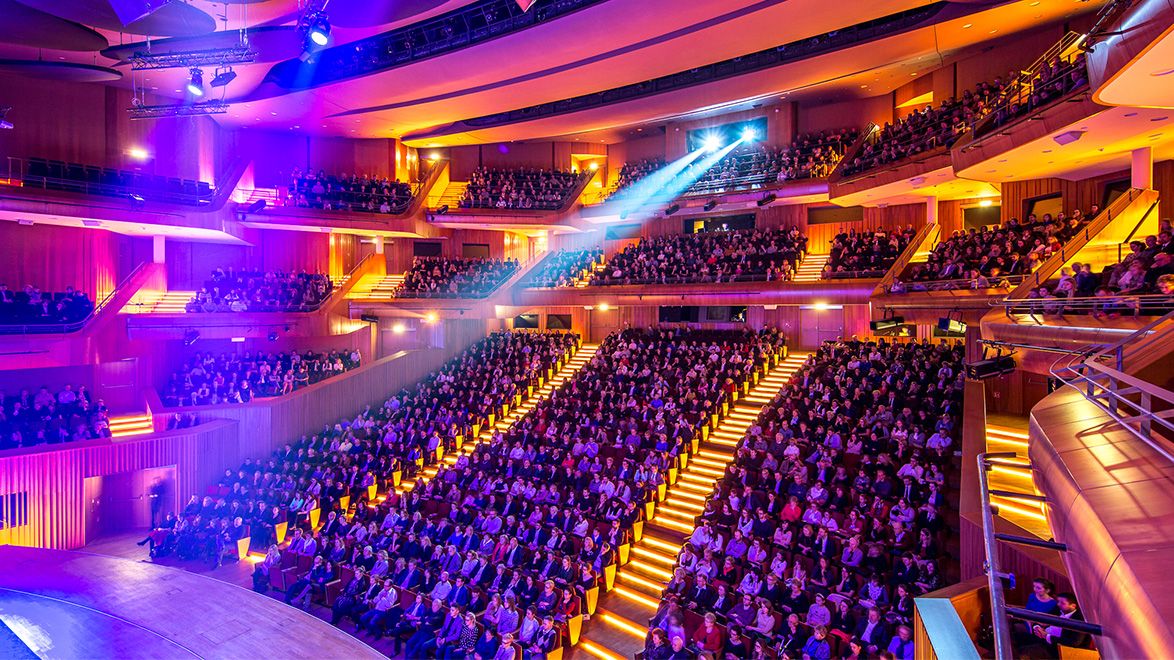
The Challenges of MICE Tourism
MICE tourism , while offering numerous benefits, also presents various challenges that need to be effectively addressed for sustainable growth and success. Here are some key challenges:
1. High costs: Organizing and hosting MICE events can be expensive, involving venue rental, catering, transportation, accommodation, and other logistical costs. This can be a barrier for smaller businesses and organizations with limited budgets .
2. Competition: The MICE industry is highly competitive, with destinations and businesses vying for a share of the market. This requires effective marketing and branding strategies to differentiate and attract participants.
3. Economic and political factors: Economic downturns, political instability, and safety concerns can impact the MICE industry, leading to cancellations or reduced participation.
4. Seasonality: The demand for MICE events can be seasonal, with certain periods experiencing higher demand and others experiencing lower demand. This can create challenges for businesses and destinations in terms of resource allocation and staff scheduling.
5. Sustainability: The MICE industry can have a significant environmental impact, and there is a growing demand for sustainable practices. This includes reducing waste, energy consumption, and carbon emissions, and adopting eco-friendly practices throughout the event planning and execution process.
6. Technological advancements: The rapid evolution of technology requires MICE organizers to constantly adapt and adopt new technologies to enhance the event experience and stay competitive. This can involve integrating virtual reality, augmented reality, artificial intelligence, and other innovative technologies into events.
7. Changing customer expectations: Participants in MICE events increasingly expect personalized experiences, customized content, and seamless integration of technology. Meeting these expectations requires flexibility, innovation, and a focus on customer satisfaction.
8. Risk management: MICE events involve various risks, such as cancellations, accidents, and security breaches. Effective risk management strategies are essential to mitigate potential losses and ensure the safety and security of participants.
9. Human resource challenges: The MICE industry requires skilled professionals with expertise in event planning, management, marketing, and logistics. Attracting and retaining qualified talent can be a challenge, especially in competitive markets.
10. Data and analytics: Collecting and analyzing data on participant behavior, preferences, and trends can help MICE organizers make informed decisions, improve event planning, and optimize the overall experience. However, data privacy and security concerns need to be addressed.
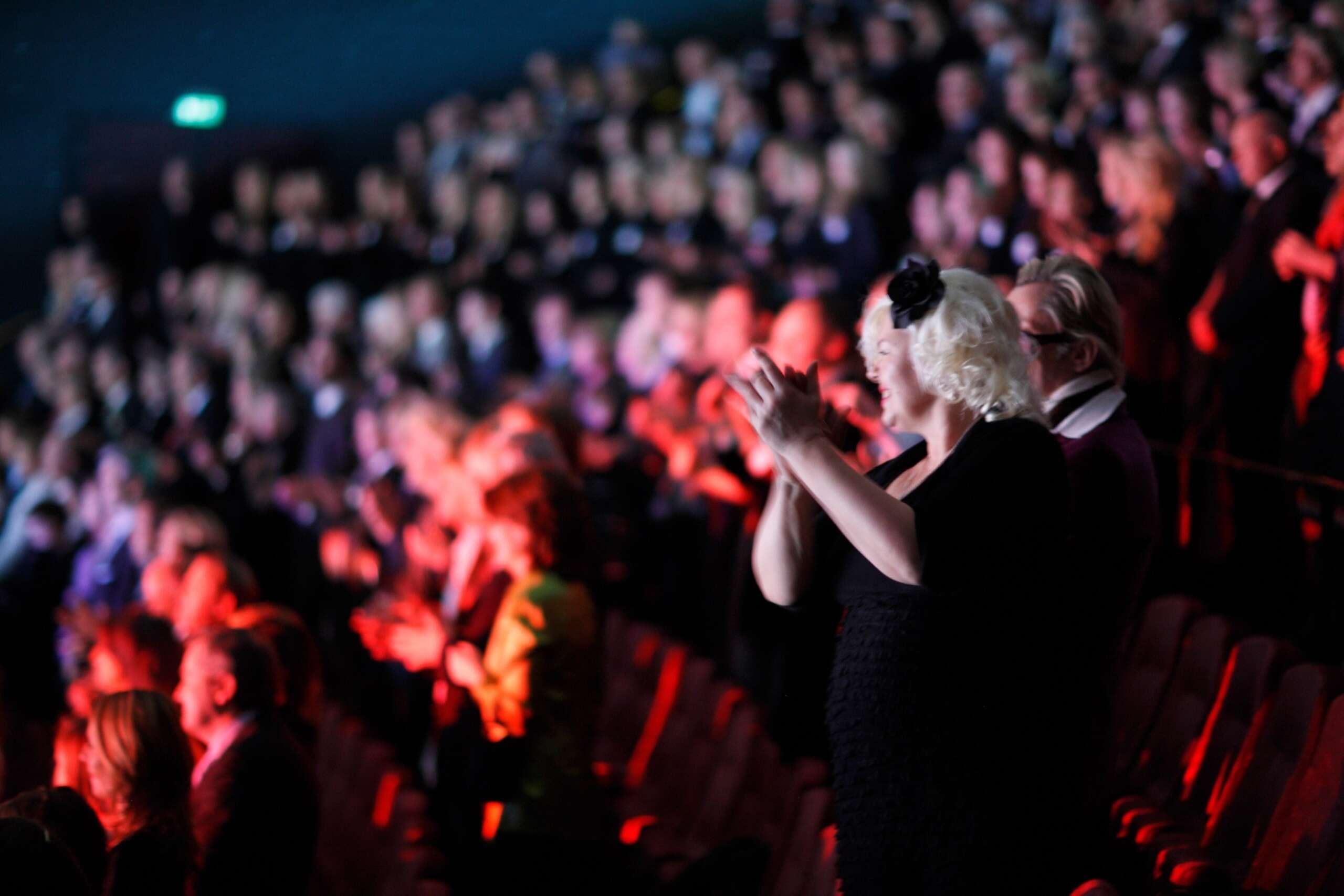
The Top MICE Tourism destinations
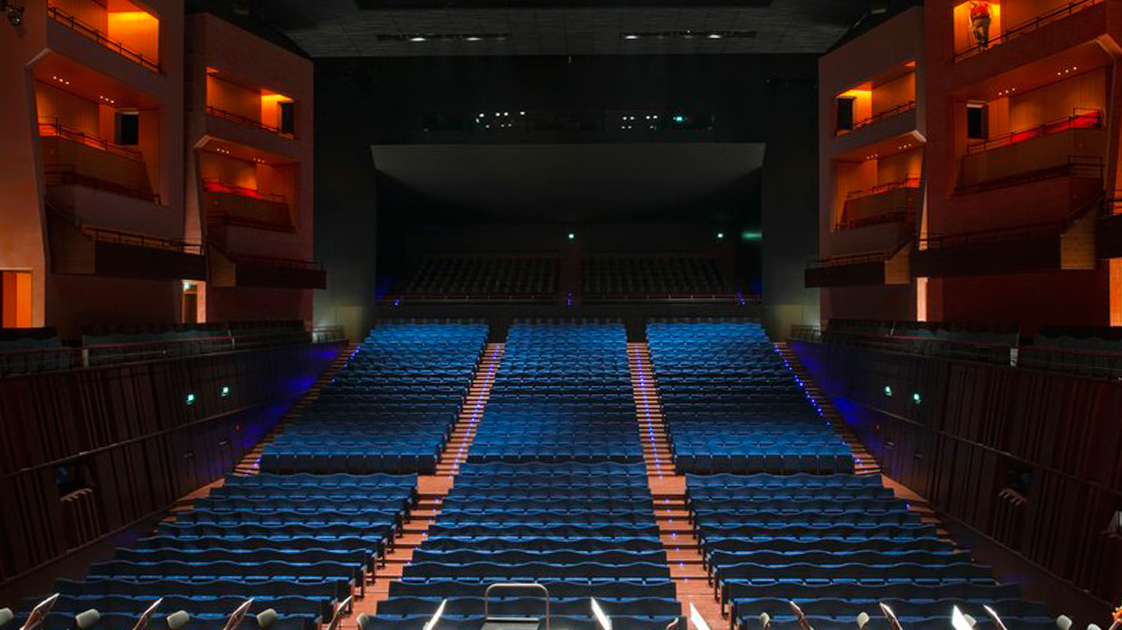
Latest Trends in MICE Tourism
Key factors for successful mice tourism events.
Organizing a successful MICE tourism event requires meticulous planning and execution, catering to the specific needs and expectations of participants. Here are some key factors to ensure a positive outcome:
1. Defining clear objectives:
- Set SMART goals: Clearly define the event’s purpose, target audience, desired outcomes, and desired return on investment (ROI) using the SMART framework (Specific, Measurable, Achievable, Relevant, and Time-bound).
- Align goals with stakeholders: Ensure that the event’s objectives align with the interests and needs of all stakeholders, including organizers, participants, sponsors, and the host destination.
2. Selecting the right destination and venue:
- Accessibility and infrastructure: Choose a location that is easily accessible for participants, with convenient transportation options and appropriate infrastructure, including accommodation, meeting spaces, and technology capabilities.
- Alignment with event theme: Consider how the destination and venue complement the event’s theme and overall experience.
- Cost-effectiveness: Evaluate the costs associated with the location and venue and ensure they align with the budget.
3. Engaging content and programming:
- Tailored content: Develop engaging and informative presentations, workshops, and activities that cater to the specific interests and needs of the target audience.
- Interactive elements: Incorporate interactive elements throughout the event to keep participants engaged and facilitate networking opportunities.
- Innovation and creativity: Consider incorporating innovative and creative elements to keep the event fresh and memorable.
4. Seamless logistics and organization:
- Detailed planning and communication: Develop a comprehensive timeline and plan, considering all logistical aspects like transportation, accommodation, catering, and technology. Communicate effectively with all stakeholders throughout the planning process.
- Contingency planning: Anticipate potential challenges and develop contingency plans to address them effectively.
- Professional team: Assemble a team of experienced and qualified professionals to handle various aspects of the event planning and execution.
5. Excellent customer service:
- Attentive and proactive service: Ensure participants feel valued and supported throughout the event. Provide attentive and proactive customer service, addressing their needs promptly and efficiently.
- Feedback mechanisms: Implement feedback mechanisms to gather participant feedback to continuously improve the event experience.
EVENT VENUES
What are event venues how to choose the right one, mice events, don't miss our new mice events section.
A 100% online magazine aimed exclusively at MICE industry.
www.micemag.com [email protected]

- Privacy Overview
- Strictly Necessary Cookies
This website uses cookies so that we can provide you with the best user experience possible. Cookie information is stored in your browser and performs functions such as recognising you when you return to our website and helping our team to understand which sections of the website you find most interesting and useful.
You can find more information about our privacy policy here: Privacy Policy
Strictly Necessary Cookie should be enabled at all times so that we can save your preferences for cookie settings.
If you disable this cookie, we will not be able to save your preferences. This means that every time you visit this website you will need to enable or disable cookies again.

MICE tourism: A simple explanation
Disclaimer: Some posts on Tourism Teacher may contain affiliate links. If you appreciate this content, you can show your support by making a purchase through these links or by buying me a coffee . Thank you for your support!
Mice tourism is a prominent part of the tourism industry, yet many people have no idea what MICE means! Well, in this article I am going to change that! Read on to learn what mice tourism is, how the MICE tourism industry has grown worldwide and why this type of tourism is so important!
Conferences
Exhibitions, the growth of mice tourism, why is mice tourism important, industry players in the mice tourism sector, the future for mice tourism, mice tourism: further reading, what is mice tourism.
MICE tourism is a part of the business tourism industry. It encompasses four niche areas, which are:
- Incentive travel
As you can see, MICE is actually an acronym used to group together the four tourism types mentioned above- contrary to popular belief, it has nothing to do with rodents!
MICE tourism is typically tourism provision that is planned in advance and designed for large groups of people for particular purposes. Leong (2007) defines MICE as ‘a type of tourism where groups of participants are gathered to achieve certain purposes.
Below, I have provided an explanation of each component of MICE:

Mice tourism includes any types of travel for the purpose of a meeting(s). This ranges from small meeting to large meetings. Meetings can be short in duration (e.g. last a couple of hours) or long (e.g. a week or more). Types of meetings include (but are not limited to):
- Board meetings
- Focus groups
- Training seminars
- Strategy planning
- Shareholder meetings
- Management meetings
Traditionally, meetings have been predominantly face-to-face, however recent years have seen a big shift towards virtual meetings, which was accelerated by the COVID pandemic and subsequent and rapid move to digital means around the world. This will likely result in the continued decrease of travel for the purpose of meetings in the coming years.

Incentive travel refers to travel that intends to motivate or reward company stakeholders. There are different types of incentive travel, including:
- Familiarisation trips
- Teambuilding trips
- Reward trips
Research has demonstrated that incentive travel is an important corporate culture builder. If you are looking for a way to motivate your staff and enhance productivity, retention and output throughout your business, then incentive travel is often a worthwhile investment.

A conference is an event that facilitates presentation, discussion and the showcasing of work within a professional network. Conferences are often important networking events and have been a prominent part of the business tourism industry to date.
Conferences can last a day or a week or more, depending on the structure and purpose. People have historically travelled great distances for the purposes of conferences, particularly in the travel and tourism sector.
Examples of travel and tourism related conferences include:
- Association for Tourism and Leisure Education and Research annual conference
- TBEX conferences for travel creators
- Sustainable tourism conference
Whilst COVID saw conference organisers adapt and move online during the pandemic, there will always remain a space for physical conferences. There is no replacement for the face-to-face networking opportunities that occur during conferences, thus physical conferences will be here to stay, although perhaps to a lesser scale. Many conferences may move towards a hybrid approach of online and physical attendance.

Exhibitions provide an opportunity for businesses to showcase their products or services. They are often in the form of trade shows.
Exhibitions will often include stalls, breakout rooms, discussion points, presentations and opportunities for networking. Exhibitions are often large events involving large amounts of people.
Popular exhibitions in the travel and tourism industry include:
- Travel Adventure Show
- World Travel Market
- Women in Travel Summit
MICE tourism has grown considerably in recent years. This growth has been particularly prominent in Asia, where tourism in countries such as China and India have increased significantly.
There have been more conferences organised and more exhibitions in recent years than ever before. This is in part due to a growing population worldwide. It is also because our world has become more interconnected and globalised , thus requiring more meetings, conferences and other events that require international travel.
MICE tourism can be beneficial to a destination’s economy. It also provides a wealth of opportunities for individual companies or organisations who want to put themselves on the international stage.
Other benefits ion MICE tourism include:
- It facilitates the access to new technology
- It attracts high-spending visitors
- It provides high yield and return per capita
- It enhances the international economic contact
- It creates more economic multiplier effect and competitiveness
- It can enhance off-peak tourism
MICE tourists often stay longer and spend more money than other tourists, making them important tourism stakeholders. MICE tourism can also help to contribute to community building, urban renewal, and growth of the national identity (Getz, 2008). Furthermore, MICE tourism can encourage development in a destination, particularly in the areas of convention and exhibition centers, improvements of airports and other transport infrastructure and various urban renewal schemes.
MICE tourism is a multifaceted industry, involving a number of tourism stakeholders . This includes:
- Transport providers (international and domestic)
- Accommodation providers
- Those who provide pre- and post-conference tour opportunities
- Staff at specific venues – purpose built centres and hotels
- Professional conference and exhibition organisers and catering services
- Social program leaders for delegates and participants
- Specialised technical support such as audiovisual services
The variety of stakeholders involved in MICE tourism indicates the potentially wide ranging economic impacts of MICE tourism. It also provides rationale for support from government agencies in many countries. It also indicates the scope of the challenges which must be met in coordinating the activities of different stakeholders to ensure that the MICE tourism industry is sustainable and effectively managed.
The MICE industry size was valued at $805 billion in 2017 and was expected to grow at a CAGR of 7.6% to reach $1,439.3 billion by 2025. However, COVID has had a drastic impact on this and this growth is expected to slow or even decline as a result.
MICE tourism is here to stay, but much of it has/will continue to move online, meaning that the monetary value is significantly reduced.
The continuing MICE tourism industry growth (whether physically or online) shall have a positive impact in the growth of businesses, cities and destinations around the world.

As I mentioned before, globalisation has played a huge role in the growth of the MICE tourism industry and it is anticipated that this will continue well into the future. Exactly how the MICE tourism industry may look in the future is not exactly clear, however.
If you enjoyed this article, you may also be interested in:
- Business tourism explained: What, why and where
- Workation explained: What it means and how it works
- The most attractive countries offering the digital nomad visa
Liked this article? Click to share!
- Business Travel
- Home Inspiration
- Sustainable Living
- Wellbeing & Wellness
- Area Guides
- Whitepapers
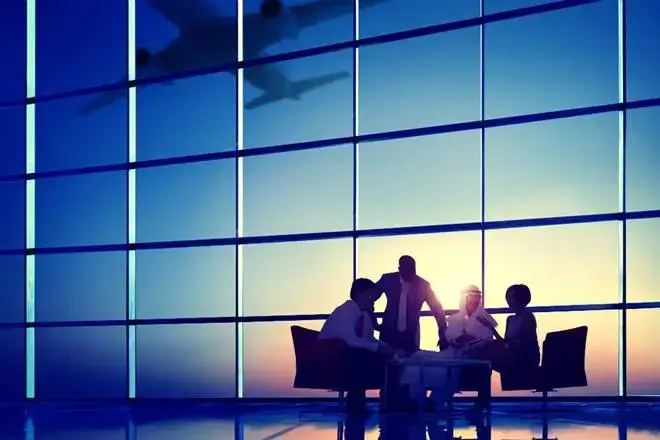
Business Travel Guide
What is mice travel everything you need to know in 2024.

MICE Travel is a term that is often used in the tourism industry, but not everyone is familiar with what it means. MICE stands for Meetings, Incentives, Conferences, and Exhibitions. It is a type of tourism that involves bringing together large groups of people for a specific purpose, such as attending a conference or participating in an exhibition.
MICE Travel is a growing segment of the tourism industry, and it is becoming increasingly popular among businesses and organizations. It is a way for companies to reward their employees, build relationships with clients, and showcase their products and services to a wider audience.
In this article, we will explore what MICE Travel is, why it is important, and what makes it different from other types of tourism. We will also look at some of the benefits and challenges of MICE Travel, as well as some examples of successful MICE events.
What is MICE Travel?
MICE travel is a type of tourism that involves corporate groups travelling with a specific purpose in mind. The acronym MICE stands for Meetings, Incentives, Conferences, and Exhibitions. MICE travellers are usually employees of a company or organization who travel to attend an event or meeting.
The Meetings aspect of MICE travel refers to business meetings, such as board meetings or sales meetings. These meetings can take place in various settings, such as hotels, serviced apartments , conference centres, or even on a cruise ship.
MICE travel is an important sector of the tourism industry , as it generates significant revenue for hotels, airlines, and other businesses. MICE travellers are often high-spending customers who require a high level of service and attention to detail.
Components of MICE Travel
Meetings are a key component of MICE travel. They are gatherings of people who come together to discuss a specific topic or issue. Meetings can be small or large, and they can take place in a variety of settings, including hotels, conference centres, and other venues.
Meetings can be classified into different types, such as board meetings, sales meetings, and team-building meetings. They can also be classified based on their duration, such as half-day, full-day, or multi-day meetings.
Incentives are rewards that are offered to individuals or groups to encourage them to achieve a certain goal or objective. In the context of MICE travel, incentives are used to motivate employees or business partners to achieve specific business goals.
Incentive travel programs can include a variety of activities, such as team-building exercises, cultural tours, and adventure activities. These programs are designed to provide participants with a unique and memorable experience that will motivate them to achieve their goals.
Conferences
Conferences are gatherings of people who come together to share information and ideas. They are typically organized around a specific theme or topic, and they can be attended by people from a variety of industries and backgrounds.
Conferences can take place in a variety of settings, such as hotels, conference centres, and other venues. They can be organized as single-track or multi-track events, and they can include keynote speakers, panel discussions, and workshops.
Exhibitions
Exhibitions are events where companies and organizations showcase their products and services to potential customers or clients. They are typically organized around a specific industry or theme, and they can be attended by people from a variety of backgrounds.
Exhibitions can take place in a variety of settings, such as convention centres, exhibition halls, and other venues. They can be organized as trade shows, consumer shows, or other types of events. Exhibitions can be an effective way for companies to generate leads and build relationships with potential customers or clients.
Importance of MICE Travel
MICE travel plays a crucial role in the tourism industry and has a significant impact on the economy. It is an essential part of the business tourism industry and encompasses four niche areas: Meetings, Incentive Travel, Conferences, and Exhibitions.
One of the key benefits of MICE travel is that it generates significant revenue through direct and indirect spending, contributing to local economic growth. It also creates job opportunities for people in the hospitality and tourism industry.
According to a report by Business Insider , the global MICE industry is expected to reach $1,439 billion by 2025, growing at a CAGR of 7.6% from 2018 to 2025.
MICE travel also fosters knowledge exchange, promotes collaboration and innovation, and provides a platform for networking. It enables professionals from different industries and countries to meet, share ideas, and learn from each other. This helps to build relationships and create new business opportunities.
In addition, MICE travel has a positive impact on the environment. Many MICE events incorporate sustainable practices, such as reducing waste, conserving energy, and promoting eco-friendly transportation.
This helps to minimize the environmental impact of the events and promotes sustainable tourism practices.
Overall, MICE travel is an essential part of the tourism industry and plays a vital role in driving economic growth, fostering knowledge exchange, promoting collaboration and innovation, and promoting sustainable tourism practices.
Economic Impact of MICE Travel
MICE tourism has a significant economic impact on the destinations where it takes place. The direct and indirect spending associated with MICE events generates revenue that contributes to local economic growth
According to a report by Grand View Research , the global MICE market was valued at USD 876.42 billion in 2022 and is expected to grow at a compound annual growth rate (CAGR) of 7.5% from 2023 to 2030.
One of the key benefits of MICE tourism is its contribution to job creation. A study by the World Tourism Organization found that MICE events create more jobs per tourist than leisure travel. This is because MICE events require a wide range of services, including accommodation , transportation, catering, and event management, which in turn creates employment opportunities in these sectors.
MICE tourism also has a positive impact on local businesses. Participants in MICE events tend to spend more money than leisure travellers, both because of the nature of their travel and because their expenses are often covered by their employers. This means that local businesses, such as restaurants, shops, and attractions, benefit from the increased spending associated with MICE events.
Overall, the economic impact of MICE tourism is significant, with direct and indirect spending contributing to local economic growth and job creation. The benefits of MICE tourism extend beyond the event itself, with local businesses and the wider community benefiting from increased spending.
Key Players in the MICE Industry
MICE tourism is a complex industry that involves various stakeholders. The following are the key players in the MICE industry:
Event Planners
Event planners are professionals who help businesses and organizations plan and execute events, such as meetings, conferences, and exhibitions. They are responsible for managing all aspects of the event, including venue selection, catering, logistics, and marketing. Event planners work closely with their clients to ensure that the event meets their objectives and budget.
Destination Management Companies
Destination Management Companies (DMCs) are professional service providers that specialize in managing events and travel arrangements in a specific destination. They have in-depth knowledge of the local market and can provide valuable insights into the destination’s culture, customs, and regulations. DMCs work closely with event planners and travel agencies to ensure that the event runs smoothly.
Hospitality Providers
Hospitality providers include hotels, resorts, and other accommodation providers that offer facilities and services for MICE travellers. They provide meeting rooms, conference facilities, and other amenities that are essential for MICE events. Hospitality providers work closely with event planners and DMCs to ensure that the accommodation meets the needs of MICE travellers.
Travel Agencies
Travel agencies are professional service providers that specialize in arranging travel and accommodation for MICE travellers. They work closely with event planners and DMCs to ensure that the travel arrangements meet the needs of MICE travellers. Travel agencies can provide valuable insights into the destination’s transportation options, visa requirements, and other travel-related issues.
4 Best MICE Travel Destinations
MICE travel is an important segment of the tourism industry, and many destinations around the world have recognized its potential for generating significant revenue. Some of the most popular MICE travel destinations include:
1. Singapore
Singapore is one of the most popular MICE destinations in Asia. The city-state is known for its world-class infrastructure, modern facilities, and excellent connectivity.
It also has a diverse range of accommodation options, from budget-friendly to luxury hotels.
Some of the most popular MICE venues in Singapore include the Marina Bay Sands, Suntec Singapore Convention & Exhibition Centre, and Resorts World Sentosa.
2. Barcelona
Barcelona is a popular MICE destination in Europe, thanks to its rich history, vibrant culture, and excellent infrastructure.
The city has a range of venues suitable for MICE events, including the Fira Barcelona Gran Via, the Palau de Congressos de Catalunya, and the Centre de Convencions Internacional de Barcelona.
Barcelona is also known for its excellent cuisine, art, and architecture, making it an attractive destination for both business and leisure travellers.
Dubai has emerged as a leading MICE destination in the Middle East, thanks to its modern infrastructure, world-class facilities, and excellent connectivity.
The city has a range of venues suitable for MICE events, including the Dubai World Trade Centre, the Dubai International Convention and Exhibition Centre, and the Madinat Jumeirah Conference Centre.
Dubai is also known for its luxury shopping, dining, and entertainment options, making it an attractive destination for both business and leisure travellers.
4. Las Vegas
Las Vegas is one of the most popular MICE destinations in the United States, thanks to its world-class facilities, entertainment options, and excellent connectivity.
The city has a range of venues suitable for MICE events, including the Las Vegas Convention Center, the Sands Expo and Convention Center, and the Mandalay Bay Convention Center.
Las Vegas is also known for its luxury hotels, casinos, and nightlife, making it an attractive destination for both business and leisure travellers.
Top Trends in MICE Travel
Here are some of the top trends include:
- Technology Integration
Technology is an integral part of MICE travel, and it is being used to enhance the experience of attendees. Event organizers are utilizing technology to create interactive and engaging experiences that leave a lasting impression on attendees.
Some of the technologies being used include virtual reality, augmented reality, and live streaming.
- Sustainability
Sustainability is becoming increasingly important in the MICE travel industry. Event organizers are looking for ways to reduce the environmental impact of their events, and many are implementing sustainable practices such as using biodegradable products, reducing waste, and using renewable energy sources.
- Personalization
Personalization is another trend that is gaining popularity in the MICE travel industry. Attendees are looking for personalized experiences that cater to their individual needs and preferences. Event organizers are utilizing data analytics and other technologies to create customized experiences that meet the unique needs of each attendee.
- Hybrid Events
Hybrid events are becoming more common in the MICE travel industry. These events combine in-person and virtual elements to create a more engaging and interactive experience for attendees. Hybrid events allow businesses to reach a wider audience while still providing the benefits of face-to-face interaction.
Wellness is another trend that is gaining popularity in the MICE travel industry. Attendees are looking for ways to stay healthy and fit while attending events and meetings. Event organizers are incorporating wellness activities such as yoga, meditation, and healthy food options into their events to promote a healthy lifestyle.
Challenges Facing MICE Travel
MICE Travel has its own set of challenges that need to be addressed to ensure the success of events. Here are some of the key challenges that MICE Travel faces:
- Logistics and Planning
MICE Travel involves the organization of large-scale events, which require meticulous planning and coordination. Event planners need to ensure that all aspects of the event, such as transportation, accommodation, and catering, are well-organized and meet the expectations of the attendees.
- Budget Constraints
MICE Travel can be expensive, and budget constraints can be a significant challenge for event planners. The cost of organizing an event can quickly add up, and planners need to ensure that they stay within budget while still providing a high-quality experience for attendees.
- Safety and Security
Ensuring the safety and security of attendees is a crucial aspect of MICE Travel. Event planners need to take measures to ensure that attendees are safe and secure during the event, such as providing adequate security personnel and implementing emergency response plans.
- Technology and Innovation
MICE Travel is an ever-evolving industry, and event planners need to keep up with the latest technology and innovation to provide a unique and memorable experience for attendees. The use of technology, such as virtual reality and augmented reality, can enhance the attendee experience, but it can also be a challenge for event planners to implement and integrate into the event.
Sustainability in MICE Travel
Sustainability is a growing concern in the MICE industry as it has a significant environmental impact. MICE travel can generate a large amount of waste, energy consumption, and carbon emissions, which can contribute to climate change and harm the environment.
Therefore, there is a growing demand for sustainable practices in the MICE industry to reduce its negative impact on the environment.
One of the ways to promote sustainability in MICE travel is by reducing waste. Event organizers can reduce waste by using reusable or recyclable materials, avoiding single-use plastics, and encouraging attendees to bring their water bottles and refill them instead of buying bottled water. They can also donate leftover food to charities or food banks instead of throwing it away.
Another way to promote sustainability in MICE travel is by reducing energy consumption. Event organizers can reduce energy consumption by using energy-efficient lighting and equipment, turning off equipment when not in use, and using renewable energy sources such as solar.
They can also encourage attendees to use public transportation or carpool instead of driving alone to reduce carbon emissions.
Furthermore, promoting sustainability in MICE travel can also have economic benefits. Sustainable events can attract environmentally conscious attendees and sponsors, which can increase the event’s visibility and reputation.
Additionally, reducing waste and energy consumption can also lead to cost savings for event organizers.
How do incentives function within the MICE sector?
Incentives are an important part of the MICE sector because they provide a way for companies to reward their employees or customers. Incentive travel is often used as a way to motivate employees to achieve specific goals or to reward them for their hard work. Incentives can also be used to build relationships with customers by offering them exclusive experiences or rewards.
What are some typical examples of MICE tourism?
MICE tourism includes a wide range of events, from small meetings to large-scale conferences and exhibitions. Some examples of MICE tourism include trade shows, product launches, corporate meetings, and incentive trips. These events can take place in a variety of locations, from convention centres to hotels and resorts.
Why is the MICE industry considered important for hospitality and tourism?
The MICE industry is an important part of the hospitality and tourism sector because it generates significant revenue for businesses and local economies. MICE events bring in large numbers of visitors who spend money on transportation, accommodations, food, and entertainment. Additionally, MICE events can help to promote a destination and attract future visitors.
What types of events are categorized under MICE travel?
MICE travel encompasses a wide range of events, including corporate meetings, conferences, exhibitions, trade shows, and incentive trips. These events can be held for a variety of purposes, such as networking, education, or product launches.
Read more Business Travel Guide articles

9 Corporate Credit Card Policy Best Practices

A Complete Guide to Corporate Travel Allowance

9 Benefits of Organizing Company Trips for Employees
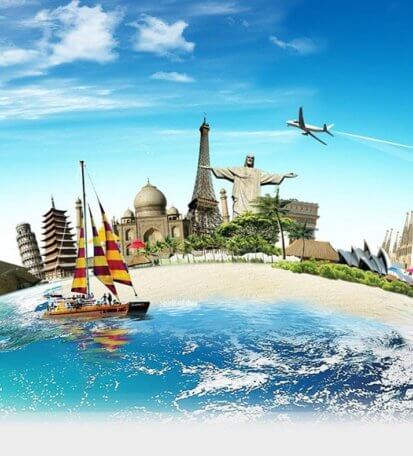
12 Different Types of Tourism You Need to Know
- Hospitality Industry
What is MICE? (Meetings, incentives, conferences & exhibitions)
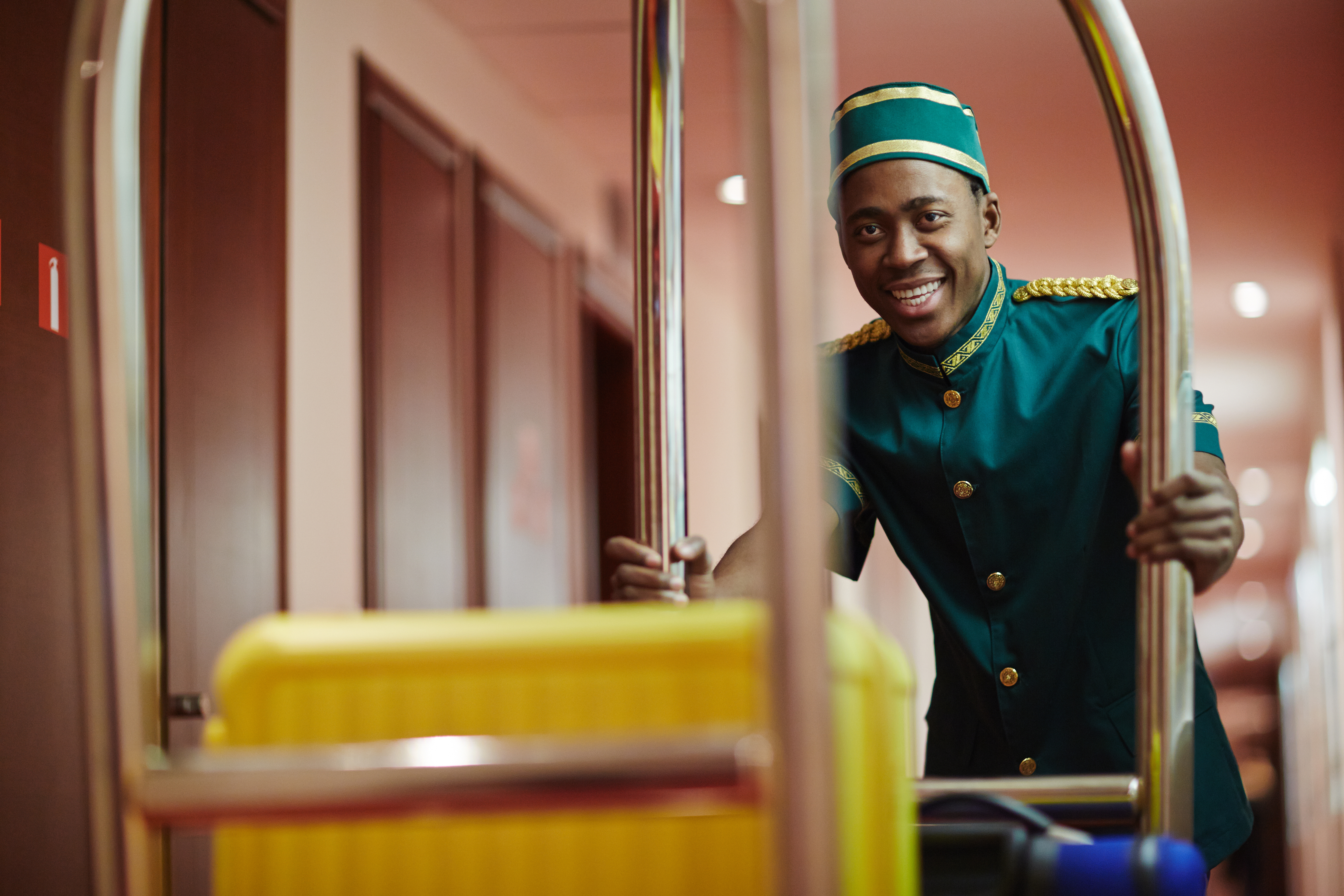
August 20, 2020 •
3 min reading
Putting the nice into MICE
Nothing to do with pest control, everything to do with business-minded travel. Put simply, MICE stands for Meetings, Incentives, Conferences & Exhibitions. It is business tourism at its finest, aimed at bringing together top professionals from every sector in an enhanced, tailor-made hospitality setting.
What is MICE?
Meetings are typically held in hotel conference rooms or at convention centers. They are single-day events that bring together a group of professionals to address a key challenge or set goals for the organization.
Incentives are travel rewards a company may provide in return for excellent professional performance from individual employees, groups or partners. A few days in a resort, hotel or popular hospitality venue at your company’s expense does wonders for employee loyalty.
Conferences
Conferences take meetings to the next level and are designed for a large corporate group to share knowledge across several days. They often include not only key members of the organization, but also guest speakers and the general public.
Exhibitions
Exhibitions are essentially trade shows where an organization promotes its key products and services to the public. They are hyper-focused events that drum up business and help employees to network and build lasting professional relationships.
MICE services: Revenue implications
Implementing tailor-made MICE services into a hotel infrastructure is a way of securing additional long-term valuable growth. The latest Convention Industry Council report claimed that 85% of meetings in the U.S. are conducted at venues with lodging, generating more than 275 million room nights annually. The expenditure of MICE travelers is much higher than leisure travelers, with profitable customers coming from the world of IT, banking, pharmaceuticals, retail and hospitality.
In brief, hotel meetings and corporate events are great way to boost revenue and secure those extra bookings. Lastly, developing MICE services is the perfect opportunity to enhance a hotel’s reputation and profile, besides its profitability.
MICE: Required skills
The expertise required to excel in MICE tourist management is based on interpersonal, creative, organizational and technical skills. Innovative creativity is needed to design original event concepts, select the right venues and market effectively. The strong practical component must include technical know-how ranging from audio-visual dexterity to accessing fast-track visa apps. Soft skills such as patience, empathy, teamwork and problem-solving are vital if, for example, a large traveling party from a culturally-specific region are to be greeted with the appropriate welcome drink.
This niche hospitality market has seen hotels having to create jobs for innovative meeting planners and professional conference services staff, as well as develop industry-specific programs to add new dimensions to their overall service infrastructure. In some cases, recruiting in-house can prove difficult if all competencies are to be met, hence the rise in Destination Management Companies (DMC) that have started to spring up worldwide.
A DMC aims to offer the full range logistic services in their specialist destinations: meet & greet, transfers & transportation, hotel accommodation, restaurants, activities, excursions, conference venues, themed events and gala dinners. They are often able to provide preferential rates based on the buying power that they have with their preferred suppliers.

MICE: Global events
A number of global events focus on MICE travel, especially the incentive niche, many of which are organized by Questex Travel Group (formerly MEET). Of the annual events, these are some of the most prominent in the industry around the world:
- Global Meeting & Incentive Travel Exchange (GMITE): Formerly known as Incentive Travel Exchange (ITE).
- Latin America Meeting & Incentive Travel Exchange (LAMITE): Working to connect business opportunities in Latin America.
- Caribbean Meeting & Incentive Travel Exchange (CMITE): The island version of the ITE.

Keep reading

The future of luxury experiences: Where luxury meets hospitality
Apr 09, 2024
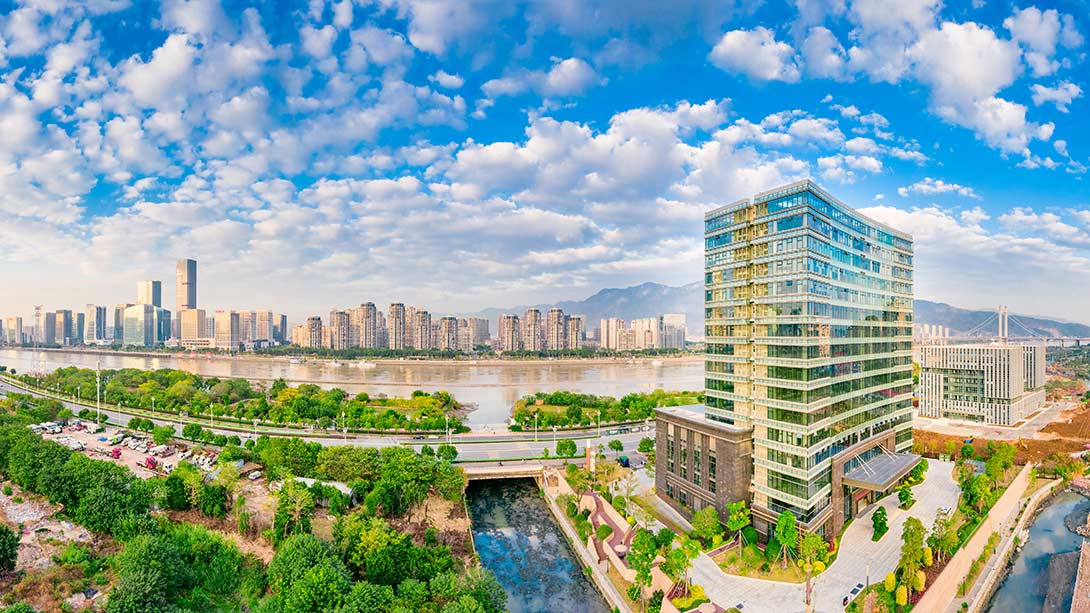
The potential of green financing for hotel real estate in Asia
Apr 04, 2024

The future of hotel distribution channels: Seizing opportunity in channel disruption
Apr 03, 2024
This is a title
This is a text
- Bachelor Degree in Hospitality
- Pre-University Courses
- Master’s Degrees & MBA Programs
- Executive Education
- Online Courses
- Swiss Professional Diplomas
- Culinary Certificates & Courses
- Fees & Scholarships
- Bachelor in Hospitality Admissions
- EHL Campus Lausanne
- EHL Campus (Singapore)
- EHL Campus Passugg
- Host an Event at EHL
- Contact our program advisors
- Join our Open Days
- Meet EHL Representatives Worldwide
- Chat with our students
- Why Study Hospitality?
- Careers in Hospitality
- Awards & Rankings
- EHL Network of Excellence
- Career Development Resources
- EHL Hospitality Business School
- Route de Berne 301 1000 Lausanne 25 Switzerland
- Accreditations & Memberships
- Privacy Policy
- Legal Terms
© 2024 EHL Holding SA, Switzerland. All rights reserved.

- Market information
- MICE tourism
- Market Potential
- Share this on:
The European market potential for MICE tourism
MICE tourism includes travel to meetings (M), incentives (I), conferences (C), and exhibitions (E), of which the conference market is the most lucrative. The United Kingdom and Germany are the biggest European markets. However, the approach to this market is fundamentally different from that of leisure tourism. As a business you can play a role in the facilitation of the event itself, or participate in the leisure programme before, during and/or after the event. This leisure part provides interesting opportunities, because more and more delegates want to extend their visit to the destination. To raise interest, you need to offer products and services that are sustainable.
Contents of this page
- Product description
- What makes Europe an interesting market for MICE tourism?
- Which European countries offer most opportunities for MICE tourism?
- Which trends offer opportunities on the European market for MICE tourism?
1. Product description
MICE tourism refers to business travel for the purposes of Meetings, Incentives, Conferences and Exhibitions. These are organised to achieve a wide range of business, academic, professional or cultural objectives. The acronym of MICE clearly identifies the components of the market, such as displayed in Figure 1.
Figure 1: Components of MICE tourism
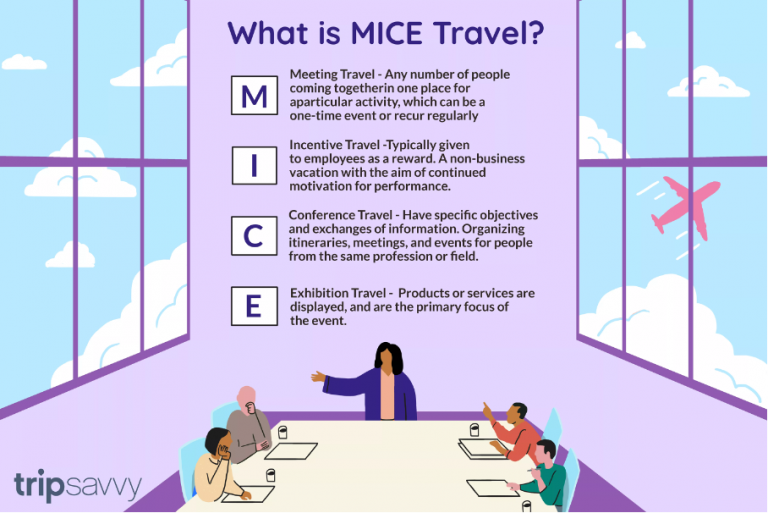
Source: www.tripsavvy.com
MICE tourism is a niche within business tourism. However, the word business needs to be interpreted in a broad sense. It also includes public bodies, semi-public bodies such as non-governmental organisations, associations, universities, and any other kind of organisation.
MICE tourism is a type of tourism where large groups of people come together in a particular place and for a particular reason, such as a mutual interest. Therefore, it can also be considered a specific kind of group tourism. When meetings involve a large group of people, they are normally held at convention centres.
Over the past few years, the term MICE has become less popular. Increasingly, it is referred to as the meetings industry or the events industry.
As a business you could assist in facilitating MICE events. This means that you could contribute by providing all kinds of creative services, such as directional signages, banners, show displays, kiosks/exhibit space, event photography, event marketing, sponsorship management, AV/technical production, group air fulfilment, on-site event logistics & staffing, supplier management, virtual meetings, and risk management services.
- Contribute to an event by offering a leisure programme before, during and after the formal event. Make sure that attendees of MICE events at your destination do not only fly to your country for a three-day conference, but try to make an effort to extend their trip and try to create cross-overs with other niche-markets in tourism such as cultural tourism , adventure tourism , nature tourism , or wellness tourism . As the preparation and planning of a MICE events takes a long time, even several years, you need to have a pro-active attitude and realise that you need to invest time years before you may reap the fruits of your efforts.
2. What makes Europe an interesting market for MICE tourism?
The MICE market is the highest revenue contributor to the tourism industry. Globally its value accounted for $805 billion in 2017, $916 billion in 2019 and it is projected to reach $1,439 billion in 2025 and $1,780 billion in 2030. So the global market shows a continuous growth – with a dip in 2020 due to the COVID-19 pandemic.
There is a number of factors that drive the growth of MICE tourism. Some of these factors are listed in Table 1.
Table 1: Factors that drive and impede the growth of MICE tourism
All MICE niches are on the rise and (before the outbreak of the COVID-19 pandemic) it was expected that this growth would continue in the future. Yet, globally, the Meetings niche is the biggest of the four. In 2017 it accounted for $505.8 billion of the revenues.
The European MICE market is the biggest in the world
Europe dominates the global MICE market with a market share of 50%, and it is expected that Europe will keep this position until 2030. Also, in terms of the number of international association conference participants, Europe is the largest market in the world. In 2000, 6% of all outbound trips from Europe were related to MICE. Of the outbound MICE trips 48% was within the niche of Conference/congress/seminar, 42% was related to Exhibitions/trade fairs and 10% to Incentives (unfortunately figures about Meetings were not registered).
The European MICE market is not only attractive because it is big and growing. It is important to note that MICE tourism has a positive impact on the growth of businesses, cities, and destinations as it is an influential and significant economic factor, because:
- Business travellers spend more than leisure travellers in a short period of time (but they are more demanding as well!).
- MICE events serve as networking opportunities for all businesses involved, and so they have a positive effect on many other industries and in particular on the local tourism industry.
- Professional contact and sharing of knowledge give a boost to creativity and innovation.
- MICE events can give a boost to the local job market.
- Attendees of MICE events may extend their stay to enjoy their leisure time at the destination, while they may also decide to return later with their partner, family or friends for a holiday.
- Because MICE tourism is not bound to the regular tourism seasons in Europe, MICE events are particularly welcome in the low tourism season.
- MICE tourism may enhance the reputation of a destination.
So the European MICE market is a very lucrative and profitable kind of tourism which offers great opportunities for any destination.
Conferences are the jewel in the crown of MICE to focus on, because they are the most lucrative. Conferences of international associations, such as the ones for architects or cardiologists, are a good example. They may attract up to 30,000 attendees. If you are located in a country that is already popular for leisure tourism and has an attractive climate, that is an advantage. It is likely that the key infrastructure of airline connections, airports, and hotels is already in place. They make your destination attractive for incentive travel. Tanzania is a good example of such an incentive destination.
As the MICE sector is increasingly looking for unique and memorable experiences, new MICE destinations are emerging, and they may become more important than before. Countries in Latin America, Africa and Asia are looking increasingly at incoming MICE tourism. A country such as Egypt has been building their infrastructure and sees a growth of MICE tourism. Be aware that the way your country has dealt with the COVID-19 pandemic will be a factor in the decision-making process of the organisers of MICE events. This is a disadvantage for emerging destinations.
For destinations to open their doors to MICE, a convention bureau needs to be established . This is an essential step to marketing and branding the destination which is different from the marketing for leisure and holidays. In fact, a convention bureau is a Destination Management Organisation (DMO), but different to tourism DMOs. The size of a convention bureau is not necessarily large. It could consist of one person. They are usually staffed by local people. The skills of the men and women working there determine how successful they can be.
The convention bureau in Kenya that is currently being established is a good example. It puts the country on the map as a MICE destination. Namibia , Rwanda and Ethiopia have recently come into the market with brand new convention bureaus. The main focus of these convention bureaus is conferences (of international associations) and incentives.
Important considerations for the planners and the attendees in the MICE market are location, quality, experiential value, and sustainability. These are important conditions that you need to have in place in your destination in order to be attractive to the European MICE market. Regarding the location, it is mainly accessibility, security and sufficient capacity that matter.
Quality refers to facilities such as customer service, safety/security and reliable transport, clean and comfortable accommodation, good catering, and conference rooms with excellent technical infrastructure. Experiential value refers to a location that offers a unique and memorable experience at a reasonable price, for example by means of an exciting leisure programme before and/or after the formal part of the programme.
- Ensure that you focus on quality, experiential value and sustainability.
- Attend classes at the MICE Academy in Africa , if you can, to learn about the MICE industry and to establish the necessary skills, or by attending one or more events by ICCA (International Congress and Convention Association) from which you learn pretty quickly. It is good to know that the MICE industry is quite a cooperative and collaborative industry, in which contacts are easily established.
- Keep informed about how to respond to COVID-19 and on how to manage the effects of COVID-19 .
3. Which European countries offer most opportunities for MICE tourism?
The share of European countries is quite stable. The United Kingdom and Germany have been the biggest source markets for MICE and business travels in Europe for years. The list is led by the UK market with 4.5 million outgoing MICE trips a year, directly followed by the German market with 3.3 million MICE trips. These two leaders are followed by France with 1.6 million MICE trips. Switzerland (a non-EU country), Spain and Italy rank lower with a similar share of respectively 1.1 million, 1.1 million and 1.0 million outbound MICE trips.
Note: the data for Spain are from 2000, the other data from 2012.
United Kingdom
The United Kingdom is the most important country of origin for outbound MICE tourism. In 2012 the country counted 4.5 million outbound MICE trips. Although the data of how these trips were distributed across the MICE niches are 10 years old, it is likely that the majority of outbound MICE trips are for meetings and incentives, as the number of MICE trips to conferences and exhibitions is relatively small.
The United Kingdom market looks promising for small and medium-sized enterprises (SMEs) in the field of leisure, as 29% of business travellers that were interviewed during the corona pandemic would like to extend their stay to enjoy leisure time at the destination in the future.
Table 2: Some MICE statistics of the United Kingdom
The German outbound MICE market is the second largest, with 3.3 million trips in 2012. In Germany outbound MICE trips constitute over a third of all outbound business trips (35%). Although the data in the table are incomplete, it is likely that the biggest contributors to the outbound MICE trips are meetings and conferences.
Companies, mainly in finance, insurance, pharma and automotive, have a large share in the outbound MICE market and spend high budgets on events and incentives. These industries predominantly organise kick-off events, conferences and meetings. In 2018 intercontinental events had a share of 20.8%, a growth of 4.6% in 10 years. Only 15% of the travellers that were interviewed during the COVID-19 pandemic say they would like to extend their business trip at the destination for leisure purposes.
Table 3: Some MICE statistics of Germany
France is the third-largest MICE market in Europe, concerning outbound travel, but the size is much smaller (1.6 million outbound trips) than the United Kingdom (4.5 million) and Germany (3.3 million). The French MICE market takes a large share of outbound business travel (40%). Although the data for France are incomplete, it is likely to assume that trips to Exhibitions and Conferences make up the biggest share, whereas the contribution by trips to Meetings and Incentives is quite small. One in five travellers that were interviewed during the COVID-19 pandemic say they would like to extend their business trip with some leisure time.
Table 4: Some MICE statistics of France
The market size of outbound MICE tourism in Spain counted 1.1 million trips in 2000. Compared to the other countries in the top five, MICE tourism has a very big share in business tourism at large: 74%. The data for Spain are incomplete, yet the table shows that it is likely that outbound Conference and Exhibition trips make up a similar share of about half a million. For leisure businesses Spain looks like a promising market, as one third of the business travellers would like to extend their business trips with leisure activities.
Table 5: Some MICE statistics of Spain
Italy is ranked last in the top five of European countries in terms of the size of the outbound MICE market. Its market size is nearly as large as in Spain. Similar to Germany, the outbound MICE market makes up a share of one third of the outbound business market (34%). Incentive trips and Conference trips each constitute about one third of the market. The remainder is composed of outbound trips to Meetings and Exhibitions, although data are not available. Just like in Spain, Italian business travellers are likely to extend their future trip with leisure activities (39%), which makes it an interesting market for businesses.
Table 6: Some MICE statistics of Italy
- Target associations with membership across Europe (and beyond) to attract MICE events from the European market, instead of targeting specific countries. The challenge is to enter the bidding system and to win the event, which takes place a number of years in advance and for which a lot of paperwork needs to be completed. It is a competitive tendering system usually led by the convention bureau. The ICCA website provides good reports about strategies for bidding. Rwanda can act as a best practice, as they have a very efficient convention bureau .
4. Which trends offer opportunities on the European market for MICE tourism?
There are two main trends on the MICE market that stand out: digital transformation/hybrid events and sustainable travel. These trends offer opportunities for innovative concepts.
Digital transformation and hybrid events
The COVID-19 pandemic has caused a major disruption to MICE tourism. Although a structural change of the MICE industry had already started before because of the use of social media, meeting apps and the shift towards virtual and augmented reality elements, the pandemic has boosted the digital transformation.
Many events hosted in 2020 and 2021 have been offered as hybrid events, and it is anticipated that hybrid events will be here to stay, and that its share will grow. Companies, associations and potential participants have become more cautious about travelling internationally, and because many people have lost income, they may have become more hesitant before paying a lot of money on attending an event physically, while they can also attend online by means of applications such as Zoom or Teams. It is likely that at hybrid events the share of live will gradually increase at the cost of the share of virtual over the years. The face-to-face part may become the new luxury.
This transformation to hybrid events is a big challenge for the entire MICE industry, for the associations as well as for the destinations, venues, convention centres, hotels, and so on. Therefore, it is anticipated that the change is going to shake up the MICE industry a lot. All parties need to at least have basic plans to adapt to this trend and run hybrid events. Many providers of conference and congress venues are already responding to the changes in demand and have been investing in technology for hybrid or digital formats.
The rise of hybrid events does also have advantages, such as:
- Companies in the UK who started to experiment with virtual events have caused an increase in business of MICE agencies.
- Compared to traditional on-site events, hybrid events are virtually expanded in space and not subject to one specific location. So, they will be open to larger communities.
- In normal times the very big conferences could only be hosted by a limited number of cities, because they have the appropriate venue and hotels. If the events become hybrid, and physical attendance gets smaller, the events are open to many more destinations. So new destinations are able to bid for such events for the first time.
Sustainable travel
The increased public awareness of the environment in Europe also affects MICE tourism. In fact, sustainability is now one of the main criteria for companies to choose the right venue. For example, two-thirds of buyers and sellers in the MICE market are incorporating Corporate Sustainable Responsibility into their incentive programmes. MICE destinations should try to find a fair balance between the economic benefits of the event and the negative social and environmental consequences of the travel and tourism associated with it.
It is especially attendees from generation Y and generation Z who are aware of and concerned about sustainability. For 65% of Generation Y employees, dedication of their employer to sustainability is key for their loyalty to the company. The behaviour of these generations is increasingly influenced by ethics, moral values, concerns about the environment, animal welfare, production and labour practices, and desires to positively impact communities and people.
These travellers demand availability and affordability of ‘green’, ‘eco’, ‘climate neutral’ and organic services and products. Many do not only want to reduce their holiday footprint, or visit a destination, but also to enrich it (‘do-good, feel-good’ holidays, ecological tours).
Sustainability has become a trend in tourism and its importance will evolve further in the future, boosted by the international United Nations Sustainable Development Goals and the political agenda of national governments in the EU. With the growing importance of Gen Y and Gen Z for the tourism market, the demand for more sustainable tourism experiences will expand, so the pressure for businesses to act will increase.
Sustainability criteria may play an important role in the bidding process, so convention bureaus and their associated providers at the destinations need to take aspects of sustainability in service, product, accommodation and other areas into account. Having a strategy for sustainability can convey credibility and trustworthiness.
For you as a business, sustainability provides opportunities to tap into the MICE market by creating the link between the formal MICE event and the local community, its nature and its culture by offering sustainable products and services, excursions, tours, etc. It also offers the opportunity to involve the local community in these offerings and to provide unique and memorable experiences.
Euromonitor published a ranking of countries around the world based on sustainability of tourism. You can check this list to see how sustainable your country is compared to others. The report also lists the major permanent changes in consumer behaviour per world region. The report can help your business to become more sustainable and purpose-driven.
- Visit the Global Sustainable Tourism Council website, which provides guidelines on how to develop a sustainable business.
- Keep in mind that customers are reluctant to pay a premium for more environmentally sustainable products or services. You can also try to make your business or product offer greener and get certified.
- Collaborate with other stakeholders at the destination, such as local residents and businesses, also from other sectors. This could be local guides or experts, providers of local food and of local accommodation, local farms or factories, and more (look at the website of Tourism for SDGS for an example in East Africa).
This study was carried out on behalf of CBI by Molgo and ETFI .
Please review our market information disclaimer .
- Entering the European market for MICE tourism products
Enter search terms to find market research
Do you have questions about this research?
Ask your question
MICE is a market offering great benefits to emerging destinations. One thing that they do have is ‘ novelty value ’. In the sense that, if we take London or Amsterdam or Paris, most professional people have been there. But a destination like Colombia, for example, is not so well known. That is an important card that they can play when they’re bidding – in normal times. Rob Davidsson, Managing Director MICE Knowledge
It is crystal clear that the MICE sector has an added value by organising live and face-to-face events. It is their task to argue, to defend, and to develop live encounters into very special moments. This will also be the challenge for any event organising party in the future. After the corona pandemic I think we will not automatically switch back to the old normal. The MICE sector needs to pay a great deal of attention to careful planning, facilitation and moderation of live encounters, in order to maximise the benefits of meetings. Monika Birkle, Haaga Helia University, Finland.

Related research
- What is the demand for outbound tourism on the European market?
- What trends offer opportunities or pose threats on the European outbound tourism market?
- What are the requirements for tourism services in the European market?
- (opens in a new tab) Twitter
- (opens in a new tab) Facebook
- (opens in a new tab) LinkedIn
Need help reading on this site?
Text-to-speech reader:
Business Guidance
What is MICE?
- Understanding business to business opportunities
The Role of International Travel Trade
How tourism ni can develop working with the travel trade, mice stands for meetings, incentives, conferences and exhibitions and it represents a lucrative part of the tourism mix across the globe. mice can also be referred to as business tourism or business events..
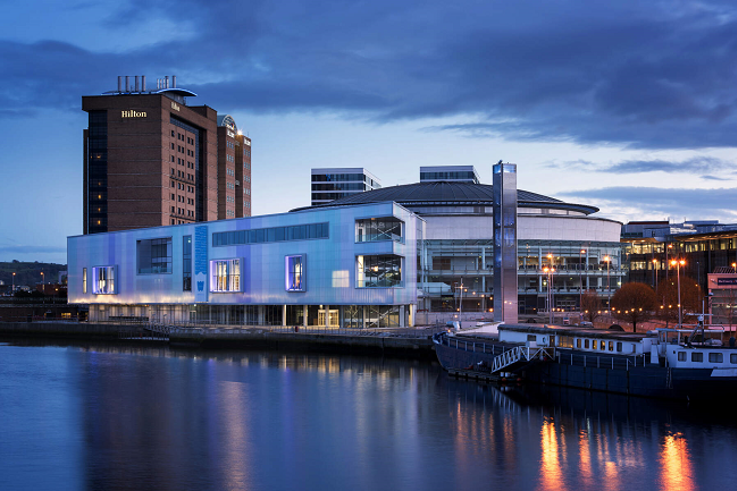
1: How much is it worth?
In Northern Ireland alone, it is estimated that conferences generate approximately £50m per annum for the local economy with incentives & corporate travel also generating significant income. In 2016, Business Events were worth approximately €715m in the Republic of Ireland and x globally. Business visitors are particularly attractive given they are worth approximately 3 times that of the average leisure visitor and they tend to visit in shoulder and off peak months of the year.
2: What does Northern Ireland offer the MICE sector?
Many factors underpin our proposition to the MICE sector -
- Investment in MICE infrastructure such as the recently extended ICC Belfast, Northern Ireland’s only purpose built convention centre.
- Compact walkable cities in Belfast & Derry-Londonderry
- Destination appeal and investment in experiences that delegates can enjoy
- The quality, professionalism and enthusiasm of our people – a Team Northern Ireland approach
- Passionate Ambassadors representing our sectoral strengths.
- Investment in Sales & Marketing activity supported by Tourism Northern Ireland
3: Know the commonly used MICE terms
DMC – Destination Management Company
A professional services company, possessing extensive local knowledge, expertise and resources, specializing in the design and implementation of events, activities, tours, transportation and programme logistics.
PCO – Professional Conference Organiser
This is a company that specialises in the management of conferences. The company acts as a consultant to the organising committee or headquarter organisation, enacting its decisions and assisting to fulfil their objectives, whilst utilising the experience and knowledge it has gained over many years in organising events.
Incentive travel is a global management tool that uses an exceptional travel experience to motivate and/or recognise participants for increased levels of performance in support of organisational goals. Traditionally Incentive Programmes were typically aimed at Sales people. Now, a range of roles can qualify and earn the reward. Incentive programmes used to be about opulence but “ experience” is the new buzz word in the Incentive world and this is where Northern Ireland can shine with its authentic experiences and Giant Spirit.
RFP stands for “Request for Proposal”. It is a document that a buyer sends to the destination suppliers when requesting their proposal for future services. It can come direct to a DMC or a hotel.
A “ familiarisation” trip is an educational visit to the destination to experience at first hand what is offered. Participants are usually international buyers who have potential business for the destination. Tourism NI delivers a full programme of Fam Trips in partnership with Tourism Ireland and Visit Britain as well as delivering its own programme. These trips are usually fully hosted by Tourism NI.

Exploring the Expanding Horizons of MICE Tourism in 2023
While traditional business travel is declining, MICE tourism is experiencing a real boom. Consequently, MICE travel has become an important part of the tourism industry and a non-negligible economic factor for countries and regions. Learn more about the importance of MICE tourism and which factors make your location attractive for meeting and incentive travel in the following article.
- What does MICE mean?
The abbreviation MICE is a term used in the tourism industry to describe a specific type of business travel. The English term MICE means:
- I ncentives
- C onventions
- E xhibitions
MICE tourism is traditionally business-oriented and deals with the organization of meetings, incentive travel, congresses and trade fairs – live on-site, in hybrid form or purely virtual . With almost every industry hosting events on a regular basis, these travel activities make up a large part of global business travel. Like leisure tourism, MICE tourism is a growing trend in the tourism industry.
- What are the MICE components?
MICE events always aim to bring professionals together, foster contacts, promote new ideas and stimulate corporate growth. MICE stands for four event formats that are planned by companies and for which others send employees and decision-makers.
Whether internal or external to the company, business meetings can be information sessions, sales meetings, conventions, training sessions, or workshops that occur on a one-time or regular basis. Meetings can range from a small group of business executives to large shareholder meetings. The location of the meeting is usually a company headquarters, but depending on the size, business meetings can take place in other locations.
Incentives
The word incentive comes from English and means incentive. Incentive trips are therefore so-called reward trips or incentive events designed to increase motivation and loyalty to the company. Companies usually sponsor incentive trips for employees, for customers and for suppliers and dealers. Incentives can range from a team-building event in a nearby climbing forest to an all-inclusive weekend trip and can be designed in many different ways.

Conventions
Conventions are congresses or conferences that bring together participants who share a common interest or concern and participate in presentations and workshops that follow a set schedule. While conventions can attract hundreds to thousands of participants, conferences are geared toward a smaller group of people and usually take place over several days take place. Organizers of congresses often combine the event with an exhibitor area, so that congresses take place in larger locations such as congress centers, convention centers or in an exhibition hall. For meeting rooms, high-quality hotels or conference venues are a good choice.
Exhibitions
Exhibitions are large-scale events such as trade fairs that attract many visitors from all over the world and usually last several days and are accompanied by an interesting lecture program. Trade fairs are industry-specific and have clearly defined target groups: on the one hand, the trade fair exhibitors who want to present their products and services and conclude new contracts. On the other hand, the trade fair visitors who are looking for new solutions and new contacts. An important aspect of trade shows is networking, so trade show organizers offer networking events for attendees at the same time. They are the best way to meet potential partners, discuss cooperations and exchange thoughts on current trends.
To better connect trade show visitors and exhibitors, event networking apps are a popular tool for organizers. Here we have summarized the 23 best event networking apps from 2023 .
- What role does MICE play in tourism?
Did you know that the World MICE Awards exist and that large trade fairs such as IMEX Frankfurt or EIBTM in Barcelona are exclusively dedicated to the topic of meeting and incentive travel?
MICE tourism has become increasingly important and professionalized in recent years. In addition to the German umbrella organization of the MICE industry, the GCB German Convention Bureau e. V ., many independent municipal or regional convention bureaus have now also established themselves, such as the Hamburg Convention Bureau or the various municipal convention bureaus in Baden-Württemberg . Basically, it can be said that due to the economic strength as well as the density of large and medium-sized companies, the convention and event industry plays a prominent role in all German regions of the country.
While MICE tourism suffered greatly in the Corona pandemic, it now accounts for nearly 50% of all business travel . And while traditional business travel is declining year by year, MICE tourism 2023 shows a clear upward trend and is gaining in importance.
Source: Germany Travel
More and more countries and regions are investing in MICE tourism and promoting their destinations as event venues. Why? Because business travelers generally spend more money than leisure travelers. That’s because companies cover a large portion of the costs. For example, the Business 2022 travel analysis indicates that spending on a business trip averages 484 euros , while spending on a private trip averages 126 euros.
- What makes a city attractive for MICE tourism?
Berlin, Hamburg, Munich – these three cities have already made it and are the top German locations for congresses, trade fairs and events. This pleases the cities and the event industry, the hotel industry and gastronomy on site. Can you learn from these cities and what factors make a city attractive for MICE tourism? In the following, we summarize which factors are important when deciding on an event location.
Source: Travel Analysis Business 2022
The location
The attractiveness of the location is crucial . Is it special and different from the usual venues? Is it well connected? Is it modern and equipped with a contemporary meeting infrastructure?
(flexible room concepts, modern technical and media equipment)? Is it possibly located near important companies or industry clusters or in a tourist destination?
Good accessibility by car and train
To make a location attractive for MICE tourism, good accessibility by car as well as by public transport is crucial.
60 percent of respondents to the Reise-Analyse Business survey said they arrive by car, 31 percent by train . If the events are international, good connections with flights are also important.
Proximity to companies or industry clusters
If there are important and large companies or industries in your city, it is per se an attractive location for MICE tourism . This is because these companies will invite business partners, plan seminars and hold events. This argument is reinforced because proximity to the company’s location is one of the most important criteria for deciding on an event location.
Very good hotel offer
Statistically, the largest budget of a business trip is spent on accommodation. Most of the business travelers surveyed stay in 4-star hotels in cities (48%), followed by 3-star hotels (28%) and 5-star hotels (11%). Since comfort and exclusivity play a major role in MICE travel and companies are willing to spend more money on a business trip, a city should be able to offer a first-class range of hotels, from inns to 5-star hotels.

Sufficient hotel rooms
During a congress or a trade fair, the hotels in large cities are often fully occupied. This is because hundreds to thousands of people flock to the city and usually book multiple nights. You should have sufficient hotel capacity for all types of events, as well as large hotels that can accommodate many meeting or convention guests at the same time.
Varied gastronomic offer
Since c atering and gastronomy also play a major role in MICE events, a good catering economy is also crucial. Whether for a working lunch, to invite business partners or a meeting with restaurant visits – the physical well-being is the second largest cost item in MICE travel after the overnight stay.
Tourist attractiveness
If your city is attractive to tourists, event organizers are more likely to choose your location. This component plays a very important role for 13 percent of respondents, and an important role for 29 percent. If you want to drive MICE tourism in your city, also highlight your attractions.
Sustainability
Did you know that sustainability is more important in business travel – compared to vacation travel? Compared to the 2021 Travel Analysis Business, the role of sustainability as a decision maker has increased significantly . Thirty percent of respondents said that sustainability – among other things – was a consideration when designing their trip, and for 17 percent, the sustainability aspect even tipped the scales when deciding between equivalent offerings. Sustainability guidelines at MICE events, good public transport connections and sustainability labels for accommodation have become a non-negligible part of MICE tourism.
Attractive social programs
What else does your city have to offer besides a suitable location for MICE travel and good hotels and restaurants? Is it possible to book special events or activities? What are the possibilities for team events or moments that provide luxury and relaxation?
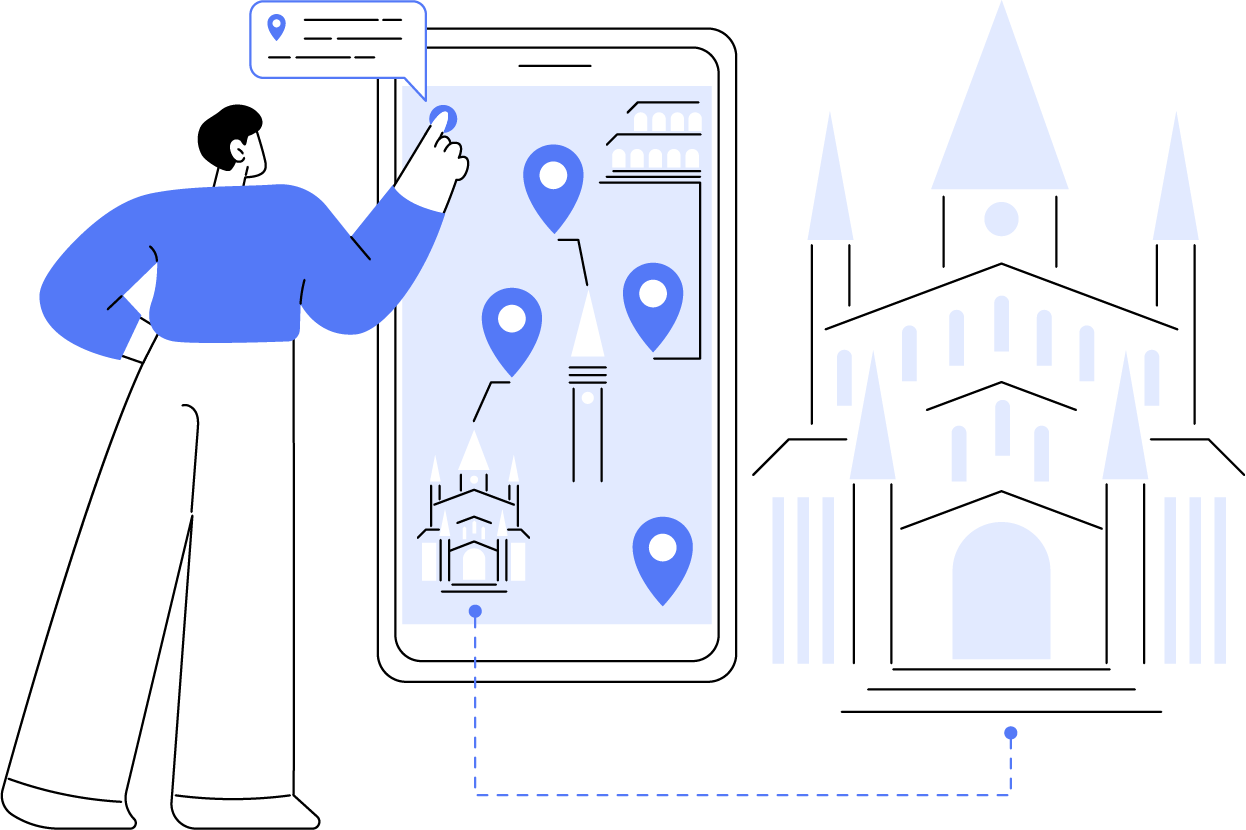
Image marketing for MICE tourism
It is important that your attractive offers for business travelers are also found, which is why locations must be findable on websites of cities and regions. Whether on the city tourism page, on search pages for event locations or on the congress or trade fair page. Make your locations and your offer for MICE tourism known on the net
An eye for future trends
The top city for events and MICE tourism is leading the way. Berlin has introduced a MICE Summit, which takes place annually to debate the challenges and future trends of the MICE industry. In this way, Berlin’s event industry ensures that new and innovative concepts are developed, even in times of change.
- Converve – Your partner for MICE events
Are you looking for a professional partner for your next event? With Converve , you have an expert on your side to help you digitize your event. Our event platform is suitable for on-site events as well as hybrid or purely virtual events and is 100 percent customizable to your needs. From registration, website & platform to networking, we help you create a unique platform exactly tailored to your specific needs. Contact us now and we’ll be happy to advise you
In this article we cover:
Receive our monthly blog and more exclusive content by event industry thought leaders.
I would like to receive the monthly newsletter from Converve. I can unsubscribe at any time.
Das könnte Sie auch interessieren

Find Sponsors for Events: The Ultimate Guide

Crafting the Perfect Event Sponsorship Package

Best Practices for Healthcare B2B Matchmaking
eZee Absolute
Online Hotel Management System
Explore MICE Tourism Opportunities for Your Hotel
In the world of hospitality, where innovation and adaptability are key to success, staying ahead of industry trends is not just a choice; it’s a necessity.
As hoteliers, you constantly explore avenues to enhance guest experiences , streamline operations, and enrich your property’s standing. Within this journey toward excellence, there’s an exceptional opportunity that often lies beyond the traditional boundaries of leisure travel.
We’re talking about the MICE industry – an acronym for Meetings, Incentives, Conferences, and Exhibitions/Events. Whether you’re operating a boutique inn nestled in a town or a luxurious resort overlooking pristine beaches. MICE holds transformative potential for your establishment.
And believe me when I say, understanding the impact of MICE on the hotel industry is not just insightful; it’s essential for a hotel.
So, let’s uncover a realm of insights on how this industry can reshape your property’s future and unveil a world of opportunities you may not have fully explored before.
Table of Content
- Impact of MICE on the hospitality industry
Driving Occupancy and Revenue
Boosting infrastructure investment, diverse guest experiences, off-peak utilization, showcasing expertise and establishing credibility.
- Opportunities for Cross-promotion Networking and Partnerships
Strengthening Brand Visibility
How events amplify hospitality’s power: case studies, does mice tourism come at a significant cost to hotels, impact of mice on the hospitality industry.
In the busy world of hospitality, MICE tourism emerges as a powerful catalyst, reshaping the landscape of hotels and accommodations. This connection between the MICE and hotels has big effects, spanning from economic growth to operational innovation. Wondering how?
Let’s take a closer look at the impact of MICE on the hotel industry and how it contributes to its growth.
One of the most immediate and noticeable impacts of MICE on the hotel industry is occupancy rates and revenue generation. Big meetings, conferences, and events bring lots of people like attendees and speakers who need a place to stay.
As a result, hotels usually get bookings during MICE events, which helps them make a steady income and handle the low seasons of the year. This is a dependable way for hotels to stay financially strong throughout the year.
As a hotel owner if there’s an important conference to be held at your hotel. You’d want to make sure your hotel is ready to give them a comfortable and impressive experience, right? Well, that’s what MICE makes you prepared for.
In simple words, MICE tourism encourages hotels to make their property even better. When hotels host big meetings, conferences, and events, they realize the need for good facilities and modern equipment.
To welcome all the people attending, hotels often decide to improve their spaces. They might build bigger meeting rooms, get advanced technology, and create new areas for events.
These changes not only make the hotel look more appealing to event organizers but also to regular visitors.
One of the standout advantages of MICE events for hotels is the opportunity to create tailored experiences for a diverse array of guests.
As hotels gear up to host conferences, meetings, and events, they naturally adapt their services and amenities to meet the specific needs of business travellers and attendees.
For example; a medical conference brings in doctors, researchers, and students, each needing specific services. Similarly, a wedding event attracts couples and vendors, each seeking different experiences. This mix of attendees creates a diverse guest environment, making hotels more dynamic and accommodating to various needs.
This flexibility showcases the hotel’s ability to cater to different needs, appealing to a wide range of guests and enhancing its reputation.
You know, how sometimes not many people visit your hotel? Well, MICE events are here to change that. MICE tourism acts as a clever strategy for hotels to make the most of their quieter times by hosting big meetings, conferences, and events.
These events bring in lots of people during periods when the hotel is usually less busy, filling up rooms and spaces that would otherwise be underutilized. This approach transforms slow days into vibrant and energetic ones. helping hotels maintain a steady flow of guests throughout the year.
By using MICE events to balance out the ups and downs of visitor numbers, hotels ensure their spaces remain active and bustling, regardless of the season.
When a hotel successfully hosts MICE events, it showcases its versatility and adaptability, which enhances its reputation as a multi-dimensional hospitality provider.
Successful execution of conferences and exhibitions not only highlights a hotel’s event management power but also showcases its commitment to excellence.
This creates a lasting impression on attendees, who are likely to share their positive experiences through word-of-mouth or online reviews.
Opportunities for Cross-Promotion, Networking and Partnerships
Hotels that host MICE events become hubs for networking and relationship building. Business professionals attending conferences or conventions often engage in informal meetings, discussions, and networking sessions within the hotel premises, making the hotel even more attractive to them.
Additionally, collaborations between hotels and event organisers provide opportunities for cross-promotion. Hotels can leverage event marketing to attract new guests and attendees, while event organizers can offer special rates to participants, creating a win-win situation.
The positive effects of MICE on a hotel’s brand perception are undeniable. Events and conferences provide hotels with opportunities to showcase their capabilities and strengths to a wider audience.
When hotels successfully host and manage meetings, incentives, conferences, and events, they showcase their expertise and dedication to excellence. This positive impression made on event participants and attendees led to increased brand recognition and awareness.
In simple terms, MICE tourism helps hotels become more popular. The hotel became popular not just for events, but also for people who want a nice place to stay.
When large-scale events happen in any city, hotels have a golden opportunity to shine. Here I am talking about the electrifying Taylor Swift Eras Tour or Olympic at Rio De Janeiro or the Chennai SuperKings T-20 match.
All these events did one thing in common – attracted audiences or fans from across the world.
If we talk about The Taylor Swift Eras Tour it has literally shocked the economy with a boom in hotel bookings and tourist arrivals.
On another note, Summer Olympic Games at Rio de Janeiro attracted athletes, spectators and media from across the globe; leading to a surge in accommodation demand.
Lastly, the T20 match, with Dhoni’s fanbase in India and abroad, happened to attract a huge number of participants at the stadium and a hike in bookings for people wanting to explore the city.
All I am saying is, that with such events hotels can make the most out of it by offering event-focused packages, showcasing convenience, creating engaging content, and leveraging partnerships, to position themselves as the go-to choice for attendees.
The cost of hosting MICE events can vary widely depending on factors such as the size and scale of the event, the facilities and services required, and the level of customization needed. While hosting MICE events may involve certain expenses, it’s important to consider both the potential costs and their benefits.
For example; Investments in upgraded infrastructure, planning coordination, and specialized services are often necessary to accommodate the unique demands of MICE tourists. However, these expenditures can also be viewed as strategic investments that yield substantial returns in terms of revenue, brand enhancement, and guest loyalty.
MICE tourism’s impact on the hospitality industry is a dynamic and transformative journey, enhancing guest experiences, driving revenue growth, and strengthening brand visibility.
Hence, the impact of MICE on your property’s success cannot be overstated. Beyond the financial gains, the positive effects of hosting MICE events touch every aspect of your business. From guest experiences and maintaining occupancy in the off-season to operational efficiency.
So, open your doors to the world of MICE, and discover a new horizon of opportunities that promise to redefine your hotel’s future.
Smart hoteliers are using this for revenue optimization! Are you?
Check out eZee Mint, the latest addition to our solutions.
Share on Mastodon
- History of T + T
- T + T Industry
Destinations
- Attractions
- Information services
- Accommodation
- Customer service
- Products + services
- BTEC teaching resources
- IGCSE teaching resources
- Support materials
- Quiz - Destinations
- Quiz - Flags
- Quiz - Maps
- Quiz - Logos
Dedicated to supporting students studying Travel and Tourism

Under construction
Mice tourism.

Conferences

Exhibitions

Travel + Tourism
Travel + tourism industry, visitor attractions, marketing for travel + tourism, produtcs + services, customer services, resources for other subjects including business, history and pshe.

Website by:

Made with love in Devon
Winter is here! Check out the winter wonderlands at these 5 amazing winter destinations in Montana
- Travel Tips
What Is MICE In Tourism
Published: December 12, 2023
Modified: December 28, 2023
by Lesya Suarez
- Plan Your Trip
Introduction
Welcome to the world of MICE tourism! If you’re wondering what MICE stands for, it stands for Meetings, Incentives, Conferences, and Exhibitions. This term, which originally emerged in the travel industry, has gained significant popularity in recent years. MICE tourism refers to a niche segment that focuses on hosting and attending events, conferences, workshops, and exhibitions, both nationally and internationally.
MICE tourism plays a vital role in the travel industry, providing a unique and lucrative avenue for businesses, professionals, and organizations to connect, collaborate, and showcase their offerings. This dynamic segment brings together the best of both worlds – the excitement of travel and the power of networking.
Are you curious about why MICE tourism is so important? With the globalization of businesses, increased connectivity, and the need for knowledge-sharing, MICE tourism has become an integral part of the corporate and professional landscape. It offers a myriad of opportunities for personal and professional growth, fostering innovation, and creating valuable connections.
In this article, we will delve deeper into the components of MICE tourism and explore its various facets, including meetings, incentives, conferences, and exhibitions. So, buckle up and get ready to immerse yourself in the fascinating world of MICE tourism!
Definition of MICE
MICE, an acronym for Meetings, Incentives, Conferences, and Exhibitions, encompasses various types of events and activities within the tourism industry. These events are typically organized for businesses, associations, government agencies, and other professional or educational groups.
Meetings: Meetings refer to gatherings of individuals who come together to discuss a specific topic, share ideas, and make decisions. These can range from small boardroom meetings to large-scale conferences with hundreds or even thousands of participants.
Incentives: Incentive travel programs are designed to reward employees, business partners, or customers for their achievements or loyalty. It often includes exciting destinations, luxurious accommodations, unique experiences, and team-building activities.
Conferences: Conferences are formal events that focus on a particular industry or subject matter. They attract experts, professionals, and academics from different parts of the world who gather to exchange knowledge, present research findings, and engage in discussions and networking.
Exhibitions: Exhibitions, also known as trade shows or expos, showcase products, services, and innovations to a targeted audience. They provide a platform for businesses to demonstrate their offerings, generate sales leads, and establish partnerships.
What sets MICE tourism apart from other forms of travel is its emphasis on facilitating business interactions, networking, and professional development. The events and activities under the MICE umbrella contribute to economic growth, knowledge exchange, and industry advancement.
MICE tourism plays a vital role in boosting local economies, as it leads to increased demand for accommodation, transportation, dining, entertainment, and other related services. It also promotes tourism infrastructure development, such as the construction and expansion of convention centers, exhibition halls, and meeting facilities.
Now that we have a clear understanding of what MICE stands for and the different components it comprises, let’s explore why MICE tourism is so important in the broader context of the travel industry.
Importance of MICE in Tourism
MICE tourism plays a crucial role in the overall growth and development of the tourism industry. It brings immense value not only to businesses and professionals but also to destinations and local communities. Here are some of the key reasons why MICE tourism is of great importance:
- Economic Impact: MICE tourism has a significant economic impact on destinations. The influx of attendees for meetings, conferences, exhibitions, and incentives leads to increased revenue for hotels, restaurants, transportation services, and other local businesses. The spending by delegates not only contributes to the local economy but also generates employment opportunities.
- Knowledge Exchange and Professional Development: MICE events provide a platform for individuals to share knowledge, insights, and best practices within their industries. Attendees have the opportunity to learn from industry experts, explore new trends, and gain valuable skills. This knowledge transfer enhances professional development and fosters innovation in various fields.
- Networking and Business Relationships: The networking opportunities in MICE tourism are invaluable. Professionals from diverse backgrounds and industries come together, creating a conducive environment for building new relationships, partnerships, and collaborations. These connections can lead to business opportunities, joint ventures, and long-term collaborations.
- Destination Promotion: Hosting MICE events enables destinations to showcase their unique offerings and attractions. The positive experiences of attendees can result in word-of-mouth promotion and increased tourism. As delegates explore the destination, they may also extend their stay to explore nearby tourist attractions, thereby boosting local tourism.
- Revenue Generation: MICE tourism brings in high-spending visitors compared to leisure tourists. Delegates often have higher budgets and are more likely to engage in additional activities such as shopping, dining, and entertainment. This leads to increased revenue streams for businesses and enables destinations to invest in upgrading infrastructure and facilities.
Overall, MICE tourism plays a vital role in driving economic growth, encouraging knowledge sharing, fostering business connections, promoting destinations, and generating revenue. It is a dynamic segment that continues to grow, adapt, and evolve, shaping the way professionals interact and collaborate in the globalized world.
Now that we understand the importance of MICE tourism, let’s explore its various components and how they contribute to the overall MICE experience.
Components of MICE Tourism
MICE tourism is comprised of several key components that collectively create a vibrant and diverse industry. These components are essential in delivering successful events and ensuring a memorable experience for attendees. Let’s explore the main components of MICE tourism:
- Meetings: Meetings are the foundation of MICE tourism. They bring together individuals with a common purpose, whether it is to discuss important matters, make decisions, or brainstorm ideas. Meetings can range from small-scale gatherings in boardrooms to large conferences held in convention centers.
- Incentives: Incentive programs are designed to reward and motivate employees, business partners, or customers. These programs often include travel to exciting destinations, luxurious accommodations, and unique experiences. Incentive travel allows participants to relax, rejuvenate, and bond, while also recognizing their achievements.
- Conferences: Conferences are formal gatherings that focus on specific industries, topics, or professions. They bring together experts, thought leaders, and professionals from around the world to share knowledge, present research findings, and engage in discussions. Conferences offer a platform for learning, networking, and staying up-to-date with the latest industry trends.
- Exhibitions: Exhibitions, also known as trade shows or expos, provide a space for businesses to showcase their products, services, and innovations to a targeted audience. Exhibitions offer networking opportunities and generate leads and partnerships. They allow attendees to explore industry advancements, compare offerings, and make informed decisions.
These components are interconnected, often overlapping and complementing each other to create a complete MICE experience. For example, a conference may include meetings, keynote speeches, and breakout sessions, while also featuring an exhibition where attendees can interact with industry vendors.
Furthermore, MICE tourism is not limited to a single destination or venue. It often involves travel and exploration of different cities, regions, and countries. Attendees have the opportunity to experience various cultures, traditions, and cuisines, making their MICE journey even more enriching.
In the next sections, we will explore each component of MICE tourism in more depth. We will uncover the intricacies of meetings, incentives, conferences, and exhibitions, and highlight their significance in creating memorable experiences for attendees.
Meetings in MICE Tourism
One of the fundamental components of MICE tourism is meetings. Meetings form the backbone of professional interactions, allowing individuals from various organizations, industries, and backgrounds to come together and collaborate. They serve as a platform for decision-making, problem-solving, and knowledge-sharing. Let’s explore the significance of meetings in the realm of MICE tourism:
Meetings in MICE tourism can vary in scale, from small boardroom discussions to large-scale conferences with hundreds or even thousands of participants. They can be held in a variety of venues, including convention centers, hotels, and dedicated meeting spaces.
One of the primary objectives of meetings in MICE tourism is to facilitate effective communication and information exchange. Participants have the opportunity to share their insights, contribute to discussions, and gain valuable knowledge from industry experts and thought leaders. This exchange of ideas fosters innovation and encourages collaboration.
Meetings in the context of MICE tourism also contribute to networking opportunities. Attendees can connect with like-minded professionals, potential clients, and business partners. These connections can lead to future collaborations, partnerships, and mutually beneficial relationships. Networking at meetings is often enhanced through social events and networking sessions organized alongside the main meeting.
In addition to the professional benefits, meetings in MICE tourism also offer participants a chance to explore different destinations. Attendees can experience local culture, attractions, and cuisine, creating a more enriching and memorable experience.
Organizing successful meetings in MICE tourism requires meticulous planning and coordination. This includes selecting an appropriate venue, arranging logistics such as accommodation and transportation, and ensuring the availability of necessary technology and equipment for presentations and discussions.
Overall, meetings are a vital component of MICE tourism as they serve as a platform for knowledge exchange, networking, and professional development. They bring individuals together, fostering collaboration, innovation, and the growth of industries and organizations.
In the next section, we will explore another key component of MICE tourism – incentives. These programs provide unique opportunities for recognition, reward, and team-building.
Incentives in MICE Tourism
Incentives are an integral part of MICE tourism and play a significant role in fostering motivation, rewarding achievements, and strengthening relationships. Incentive travel programs are designed to provide unique and memorable experiences for employees, business partners, or customers as a way of recognizing their accomplishments or loyalty.
Unlike traditional leisure travel, incentive travel goes beyond relaxation and sightseeing. It offers participants a carefully curated experience that includes activities, team-building exercises, and exclusive access to renowned destinations and venues. The goal is to create a sense of shared purpose, inspire productivity, and reinforce a positive company culture.
Incentives in MICE tourism can take various forms, depending on the goals and preferences of the organizing entity. Some common incentive programs include:
- Reward Trips: These are luxury travel experiences provided as a reward for meeting specific targets or achieving desired outcomes. Reward trips often include stays at upscale hotels, access to exclusive amenities, and one-of-a-kind experiences such as private guided tours or exclusive dining experiences.
- Team-building Activities: Incentive travel programs frequently incorporate team-building activities to strengthen relationships, foster collaboration, and encourage camaraderie. These activities can range from adventure sports and outdoor challenges to cooking classes and local cultural experiences.
- Recognition Events: Incentive trips may include special events or ceremonies to publicly recognize and reward top performers or exemplary achievements. These events often involve gala dinners, award ceremonies, and speeches from company leaders to acknowledge and celebrate individual and team successes.
- Training and Development: Some incentive programs combine travel with professional development opportunities. Participants may attend workshops, training sessions, or industry conferences as part of their incentive trip. This allows individuals to enhance their skills, gain industry knowledge, and return with increased motivation and improved performance.
Incentive programs provide tangible rewards for hard work, instilling a sense of pride and loyalty among participants. They act as powerful motivators, promoting increased productivity, engagement, and employee satisfaction.
From an organizational perspective, incentives in MICE tourism offer numerous benefits. They can help attract and retain top talent, enhance company reputation, and promote a positive work culture. These programs also foster team cohesion and strengthen relationships among participants, leading to improved collaboration and teamwork.
Moreover, incentive travel programs have a positive impact on the local economies of the destinations visited. They bring in high-spending visitors who contribute to the local tourism industry by utilizing accommodations, dining at restaurants, and participating in various activities and excursions.
Incentives in MICE tourism provide an exceptional opportunity for organizations to express gratitude, inspire loyalty, and enhance employee engagement. They create unforgettable experiences that go beyond traditional travel, leaving a lasting impression on participants.
Next, let’s explore the role of conferences in MICE tourism and the impact they have on knowledge-sharing and industry advancement.
Conferences in MICE Tourism
Conferences are a vital component of MICE tourism, serving as platforms for knowledge-sharing, professional development, and industry advancement. These formal gatherings bring together experts, professionals, and academics from various fields to discuss and exchange ideas on specific topics or industries.
Conferences in MICE tourism can range in size and scope, from small-scale regional events to international conferences with thousands of attendees. They are typically held in convention centers, hotels, or dedicated conference facilities that are equipped with the necessary infrastructure to accommodate presentations, discussions, and networking activities.
The primary objective of conferences is to facilitate the dissemination of knowledge and promote collaboration among participants. Speakers, who are often industry leaders or subject matter experts, deliver presentations on a wide range of topics, sharing their insights, research findings, and expertise with the audience.
Conference participants have the opportunity to learn from these presentations, engage in discussions, and ask questions, fostering a deeper understanding of the subject matter. This knowledge exchange plays a crucial role in accelerating industry development, encouraging innovation, and shaping professional practices.
In addition to the formal sessions, conferences in MICE tourism also provide ample networking opportunities. Attendees can connect with professionals from similar or complementary fields, allowing for the exchange of ideas, collaboration on projects, and potential business partnerships.
Moreover, conferences often feature panel discussions, interactive workshops, and breakout sessions that encourage active participation from attendees. These sessions allow for in-depth exploration of specific topics, enabling participants to delve deeper into areas of interest and engage in meaningful discussions with their peers.
Conferences in MICE tourism also contribute significantly to the economy of the host destination. They attract a large number of attendees who require accommodation, transportation, and dining services. Local businesses benefit from the increased demand generated by conference participants, resulting in economic growth and job creation.
Overall, conferences play a crucial role in MICE tourism by facilitating knowledge exchange, fostering collaboration, and driving industry advancement. Attending conferences offers professionals the opportunity to stay up-to-date with the latest trends, expand their networks, and gain valuable insights to enhance their own professional growth.
Next, let’s explore another key component of MICE tourism – exhibitions. These events provide a platform for businesses to showcase their products, services, and innovations to a targeted audience.
Exhibitions in MICE Tourism
Exhibitions play a pivotal role in MICE tourism, providing a platform for businesses and industries to showcase their products, services, and innovations to a targeted audience. Also known as trade shows or expos, exhibitions offer a unique opportunity for companies to engage with potential customers, generate leads, and establish partnerships.
Exhibitions in MICE tourism come in various sizes, from small industry-specific showcases to large-scale international events. These exhibitions are typically held in convention centers or exhibition halls that provide ample space for exhibitors to set up their booths and display their offerings in an organized and appealing manner.
One of the primary advantages of exhibiting at a trade show is the ability to reach a highly focused and relevant audience. Attendees are often professionals, decision-makers, and potential customers within a specific industry or sector. This allows exhibitors to connect with individuals who have a strong interest in their products or services.
Exhibitions offer businesses the opportunity to demonstrate their offerings in a visually appealing and interactive manner. Exhibitors can showcase their latest products, conduct product demonstrations, and provide samples or trials to engage attendees. This hands-on experience helps potential customers fully understand and appreciate the value of the products or services being offered.
Moreover, exhibitions foster networking and collaboration. Exhibitors have the chance to connect with other industry professionals, potential partners, and suppliers. These connections can lead to valuable business relationships, collaborations, and strategic alliances.
For attendees, exhibitions provide a wealth of information and a chance to explore new products, technologies, and industry trends. They can interact with industry experts, ask questions, and gain a deeper understanding of the market landscape. Exhibitions also offer a valuable platform for learning and professional development through seminars, workshops, and panel discussions conducted alongside the main exhibition.
In addition to the economic benefits for businesses, exhibitions also have a positive impact on the local economy of the host destination. They attract a large number of exhibitors and attendees who require accommodation, transportation, dining, and other services, leading to increased revenue for local businesses.
Overall, exhibitions are a crucial component of MICE tourism as they provide a platform for businesses to showcase their offerings, connect with relevant audiences, and foster industry growth. They facilitate knowledge-sharing, collaboration, and business opportunities, making them an integral part of the MICE experience.
Now that we’ve explored the components of MICE tourism, from meetings and incentives to conferences and exhibitions, let’s summarize the importance of MICE tourism and how it impacts the travel industry.
MICE tourism, encompassing Meetings, Incentives, Conferences, and Exhibitions, is a thriving segment within the travel industry. It plays a crucial role in driving economic growth, fostering knowledge exchange, and promoting collaboration and innovation. The components of MICE tourism work in synergy to create a dynamic and enriching experience for businesses, professionals, and destinations.
The importance of MICE tourism cannot be overstated. It stimulates local economies by generating revenue, creating job opportunities, and driving tourism infrastructure development. MICE events provide a platform for knowledge-sharing, professional development, and industry advancement, contributing to innovation and growth in various sectors.
Meetings in MICE tourism facilitate effective communication, collaboration, and networking among industry professionals. Incentives create motivation, reward achievements, and strengthen relationships, driving productivity and employee satisfaction. Conferences serve as platforms for knowledge exchange, networking, and staying up-to-date with industry trends, while exhibitions offer businesses the opportunity to showcase their offerings and connect with potential customers.
As MICE tourism continues to evolve and adapt to changing trends, it presents exciting opportunities for businesses and professionals worldwide. The sector has become a catalyst for economic development, knowledge transfer, and collaboration on a global scale.
In conclusion, MICE tourism plays a crucial role in the travel industry, offering a unique avenue for businesses and professionals to connect, collaborate, and showcase their offerings. Through meetings, incentives, conferences, and exhibitions, MICE tourism fosters economic growth, facilitates knowledge exchange, and promotes collaboration. It is an industry that continues to shape the way professionals interact and innovate in an increasingly interconnected world.
So, whether you’re attending a conference, planning an incentive trip, or showcasing your products at an exhibition, embrace the world of MICE tourism and discover the endless possibilities it offers for personal and professional growth. The journey awaits!

- Privacy Overview
- Strictly Necessary Cookies
This website uses cookies so that we can provide you with the best user experience possible. Cookie information is stored in your browser and performs functions such as recognising you when you return to our website and helping our team to understand which sections of the website you find most interesting and useful.
Strictly Necessary Cookie should be enabled at all times so that we can save your preferences for cookie settings.
If you disable this cookie, we will not be able to save your preferences. This means that every time you visit this website you will need to enable or disable cookies again.
We have updated our terms and conditions and privacy policy Click "Continue" to accept and continue with ET TravelWorld
We use cookies to ensure best experience for you
We use cookies and other tracking technologies to improve your browsing experience on our site, show personalize content and targeted ads, analyze site traffic, and understand where our audience is coming from. You can also read our privacy policy , We use cookies to ensure the best experience for you on our website.
By choosing I accept, or by continuing being on the website, you consent to our use of Cookies and Terms & Conditions .
- Leaders Speak
- Brand Solutions
- 10 min read
- Rebuilding the potential of MICE in India
Speaking about the opportunities to rebuild MICE (meetings, incentives, conferences, exhibitions) segment in India, the industry veterans suggest the need to set up state and city MICE Bureaus. Offering a high degree of service quality arising from skill development, getting into real time effective overseas branding, institutional support for MICE, improving air connectivity, promotion of the country under ‘Meet in India’ banner and more.
- Gagneet Kaur ,
- ETTravelWorld
- Updated On Oct 27, 2022 at 10:31 AM IST

Novotel & HICC expect a strong rebound of MICE; observe 2022 as year of recognitions
Sharing his bit of excitement with ETTravelWorld on Novotel & HICC Complex bagging the ‘Best Standalone Convention Centre’, the General Manager, Manish Dayya said that the hotel is already experiencing a bounce back of regular guests and Q4 will see strong growth from certain segments. He also shared the hotel's interest in exploring the Outdoor Catering opportunity to strengthen its presence in F&B.
- Release of advertisements in International medical /academic journals (New England Journal, The Lancet, The Journal of the American Medical Association and MICE publications
- Mega MICE Events “iMICE” (Incredible MICE) planned each year with ICPB to attract 1000 international corporates
- Welcome dinner/ cultural program to be hosted by MoT for international delegates visiting international conferences
- Ministry’s support in venues site inspection, offering international air tickets, accommodation for the site inspection team
- Ministry’s support in organising fam tours for conference planners
- Dedicated MDA for MICE operators for targeted global markets
- Export Status for MICE sub-sector
- Formal Skilling Fund for developing MICE talent and graduates.
- GST rating of 0 for forex earning MICE events
- City Convention Bureau across the country to be given MICE Export support
- By Gagneet Kaur ,
- Published On Oct 27, 2022 at 10:31 AM IST
All Comments
By commenting, you agree to the Prohibited Content Policy
Find this Comment Offensive?
- Foul Language
- Inciting hatred against a certain community
- Out of Context / Spam
Join the community of 2M+ industry professionals
Subscribe to our newsletter to get latest insights & analysis., download ettravelworld app.
- Get Realtime updates
- Save your favourite articles
- Tourism Industry
- amaresh tiwari
- Tourism News
- Mice in India
- ICCA rankings
We use own and third party cookies to offer and improve our services and to collect statistical information. If you continue browsing, we consider you have accepted the installation and use of cookies in the terms and conditions of our Privacy Policy.
- DMC/Incoming
- +34 93 434 43 25
MICE tourism: what does MICE stand for in tourism?

The acronym MICE refers to business tourism, where trips are related to professional and work activities. This concept encompasses the terms ' meetings ', ' incentives ', ' conferences ' and ' exhibitions '. In this sense, the tourism industry has developed a new stage with this subsector that involves destinations, business growth and job creation. But, how does the MICE industry fits in tourism and how important is it?
As a specialized agency in Mice events & industry we'll explain all key items in this post.
How important is MICE tourism?
As stated in the previous paragraph, MICE stands for Meetings, Incentives, Conferences and Exhibitions . MICE tourism, and the meetings industry as a whole, has become a lucrative part of the tourism mix across the globe and a key driver in the development of the tourism industry, generating very positive synergies for those involved.
Generating wealth
On the one hand, destinations are enriched, since jobs and investment are generated. In this sense, income is also increased, since people travel in any season of the year.
Powering innovation
The creativity and innovation MICE Travelers are promoted, since the exchange of knowledge is stimulated. For all these reasons, companies like CREA Group organize business events in destinations outside the conventional work environment.
Components of the Mice Industry
MICE Tourism is a very specific type of tourism. This business travel are often refered to as incentive travel, hospitality industry, professional conferences and a vast number of terms. In the next lines we will explain the main components of the Mice Industry.
• MICE Tourism always involves meeting celebrations and or congresses, conventions, trade shows, fairs and other events of a corporate nature, especially in seasons of high activity such as autumn and spring.
• Secure investment: Te costs derived from the infrastructure, promotion or recruitment of human and technological resources are high, but the economic and image impact for the company is extremely attractive and profitable.
• Comprehensive high-end service with versatile accommodation, where attendees can be accommodated individually, but also where a varied catering and restaurant service is available.
Do you need to organize meetings according to your corporate demands? Contact Crea Group, where we have the best meeting organizers who know how to adapt to the needs of each client, making a tailored suit based on the objectives.
- Team Building Coach: The Importance and Characteristics of a Good Coach
- Unique venues for outstanding events.
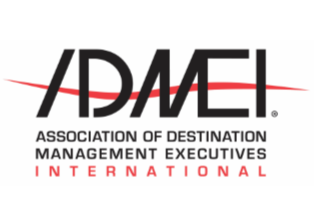
Cape Town, Surrounds Buffeted by Torrential Rain, High Winds
- Fires, high winds, flooding cause infrastructure damage
- Assessments still going on as another day of rain looms
Cape Town, South Africa’s tourism hub, and the surrounding Western Cape province have been battered by torrential rains, howling winds and bush fires that caused extensive damage to buildings, roads and other infrastructure.
Schools were closed in three municipalities to limit traffic on the roads, with storms that began Sunday expected to persist into Monday night, Western Cape Premier Alan Winde said.

IMAGES
VIDEO
COMMENTS
MICE tourism destinations are cities and regions that offer the infrastructure, facilities, and services necessary to host successful meetings, incentives, conventions, and exhibitions. These destinations attract businesses and organizations from around the world looking to organize events that are memorable, productive, and enjoyable for their ...
Perhaps one of the most important aspects of what makes a good MICE destination is tourism infrastructure. Leisure travel and MICE business travel are very different, but both require a destination to set up for receiving visitors and have the necessary facilities to offer an enjoyable experience, from hospitality to attractions and activities.
The future for MICE tourism. The MICE industry size was valued at $805 billion in 2017 and was expected to grow at a CAGR of 7.6% to reach $1,439.3 billion by 2025. However, COVID has had a drastic impact on this and this growth is expected to slow or even decline as a result.
MICE travel is a type of tourism that involves corporate groups travelling with a specific purpose in mind. The acronym MICE stands for Meetings, Incentives, Conferences, and Exhibitions. MICE travellers are usually employees of a company or organization who travel to attend an event or meeting. The Meetings aspect of MICE travel refers to ...
The region's emphasis on accessibility and green initiatives, combined with its robust infrastructure, positions Europe as a model for sustainable MICE tourism development. Asia : Rapid Growth and ...
The 6 Best Ways to Attract MICE Tourists. Now that you've grasped the advantages of MICE tourism, let's delve into the most effective methods for drawing this particular clientele to your venue. 1. Know Your Market and Know the Needs of MICE Clients. To successfully attract MICE companies to your hotel or destination, it's essential to first ...
MICE services: Revenue implications. Implementing tailor-made MICE services into a hotel infrastructure is a way of securing additional long-term valuable growth. The latest Convention Industry Council report claimed that 85% of meetings in the U.S. are conducted at venues with lodging, generating more than 275 million room nights annually.
Countries in Latin America, Africa and Asia are looking increasingly at incoming MICE tourism. A country such as Egypt has been building their infrastructure and sees a growth of MICE tourism. Be aware that the way your country has dealt with the COVID-19 pandemic will be a factor in the decision-making process of the organisers of MICE events.
To enhance India's ICCA ranking to top 20 in five years from 28thin year 2019. To encourage the State Governments to set up 6 City level MICE Promotion Bureaus at major MICE destinations of Delhi, Mumbai, Bengaluru, Chennai, Kolkata and Goa, in the Country in two year and 20 major cities in next five years.
MICE tourism had become a significant development tool for local economies before the COVID-19 outbreak. An effective destination brand is one way in which MICE stakeholders can work together to redesign and rebrand MICE tourism in the post-pandemic times. ... brand infrastructure relationships and media relationships). Cai devised another ...
MICE stands for Meetings, Incentives, Conferences and Exhibitions and it represents a lucrative part of the tourism mix across the globe. MICE can also be referred to as Business Tourism or Business Events. 1: How much is it worth? ... Investment in MICE infrastructure such as the recently extended ICC Belfast, Northern Ireland's only purpose ...
MICE tourism is traditionally business-oriented and deals with the organization of meetings, incentive travel, congresses and trade fairs - live on-site, in hybrid form or purely virtual. With almost every industry hosting events on a regular basis, these travel activities make up a large part of global business travel.
Chapter 2 Infrastructure for MICE. Chapter 2 Infrastructure for MICE. 2.1 Components of MICE. What are the components of MICE Tourism. The MICE Industry can be broken down into four big groups. Those groups sum up what the meetings industry is and, in general, have a similar overall purpose. Still, they have slight differences among themselves. 1.
factors toward MICE industry: A systematic literature review, Journal of Tourism, Hospitality &. Culinary Arts, 12 (1), 188-221. Abstract. Meeting, Incentive, Convention, and Exposition (MICE ...
In simple words, MICE tourism encourages hotels to make their property even better. When hotels host big meetings, conferences, and events, they realize the need for good facilities and modern equipment. To welcome all the people attending, hotels often decide to improve their spaces. They might build bigger meeting rooms, get advanced ...
The first step is to select the perfect destination for your MICE event. Consider factors like accessibility, infrastructure, climate, and cultural relevance. Destinations like Cape Town, Nairobi, Marrakech, and Zanzibar offer a blend of modern amenities and unique cultural experiences. 3. Local Expertise is Key.
This type of tourism is typically booked well in advance, with a high standard of facilities expected. Average high spend makes this a popular form of tourism with destinations that have the necessary infrastructure. MICE tourism is a very important sector in the tourism industry worth USD. 825 billion per year and is expected to grow at an ...
As the main G20 event unfolds in the capital, the tourism stakeholders reflect on what worked and what didn't, specifically for the MICE segment, given the mighty push. Riding the big wave, they opine, would take a multifaceted strategy, effective marketing and policies, year-round appeal, high-value tourism and infrastructure development, to make the real magic happen.
With the advent of technology, MICE tourism in Africa has the potential to grow and thrive, presenting new opportunities and challenges for the tourism industry. One of the key benefits of MICE in Africa is the economic boost it provides to local communities. MICE tourists are typically high-spending visitors who stay for extended periods and ...
MICE tourism plays a vital role in boosting local economies, as it leads to increased demand for accommodation, transportation, dining, entertainment, and other related services. It also promotes tourism infrastructure development, such as the construction and expansion of convention centers, exhibition halls, and meeting facilities.
factors influen cing MICE tourism development in Pulau Seribu are. infrastructure and marketing. In addition, the research has found that. service provider industry is t he main target market as ...
Tourism Industry: Speaking about the opportunities to rebuild MICE (meetings, incentives, conferences, exhibitions) segment in India, the industry veterans suggest the need to set up state and city MICE Bureaus. Offering a high degree of service quality arising from skill development, getting into real time effective overseas branding, institutional support for MICE, improving air connectivity ...
MICE tourism, and the meetings industry as a whole, has become a lucrative part of the tourism mix across the globe and a key driver in the development of the tourism industry, generating very positive synergies for those involved. ... • Secure investment: Te costs derived from the infrastructure, promotion or recruitment of human and ...
Tourism Strategy 2030 will create 178,000 new jobs, increase hotel room supply to 52,000 and boost international overnight visitors to over 7 million ... The Strategy's Infrastructure and Mobility ...
Governments around the world are increasingly shifting economic development expenditures to the support of early-stage businesses. In the United States, state governments have also expanded their development agencies' mandates from primarily serving as tourism-support operations to now working as engines of small business development.
Cape Town, South Africa's tourism hub, and the surrounding Western Cape province have been battered by torrential rains, howling winds and bush fires that caused extensive damage to buildings ...
After the Florida Supreme Court cleared the way for a state ban on abortions after six weeks, clinics in North Carolina and Virginia say they are gearing up for an influx of patients. Once the law ...
The college of Hospitality and Tourism Management 401h Intro to Mice Students would like to invite everyone to our upcoming even..." Mabuhay! The college of Hospitality and Tourism Management 401h Intro to Mice Students would like to invite everyone to our upcoming even... | Instagram